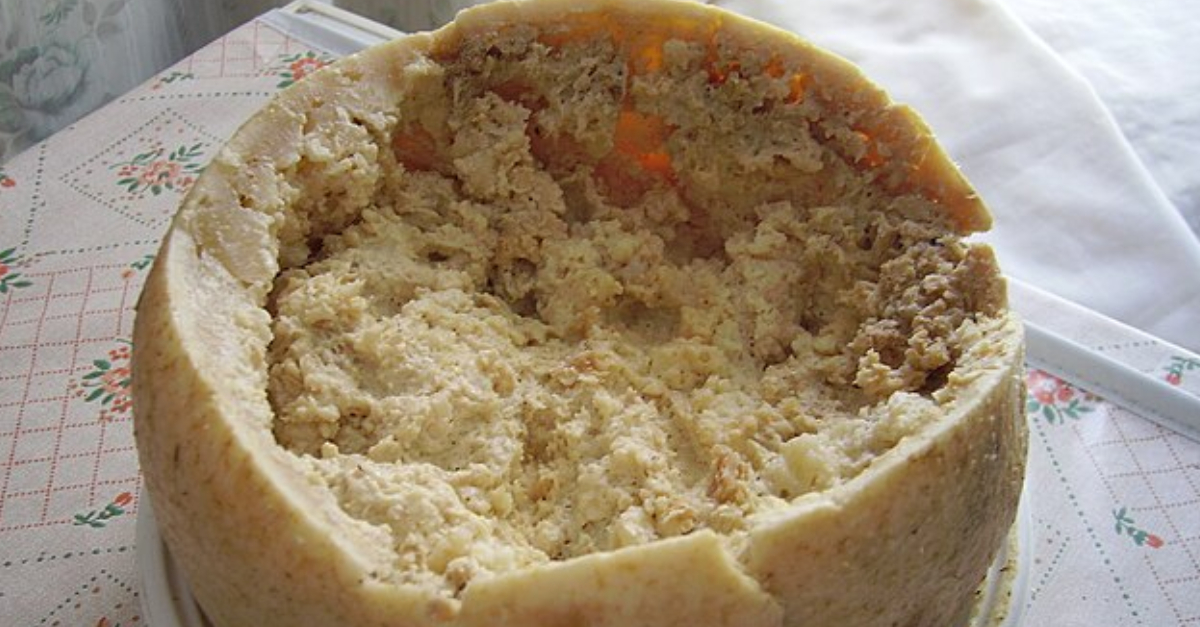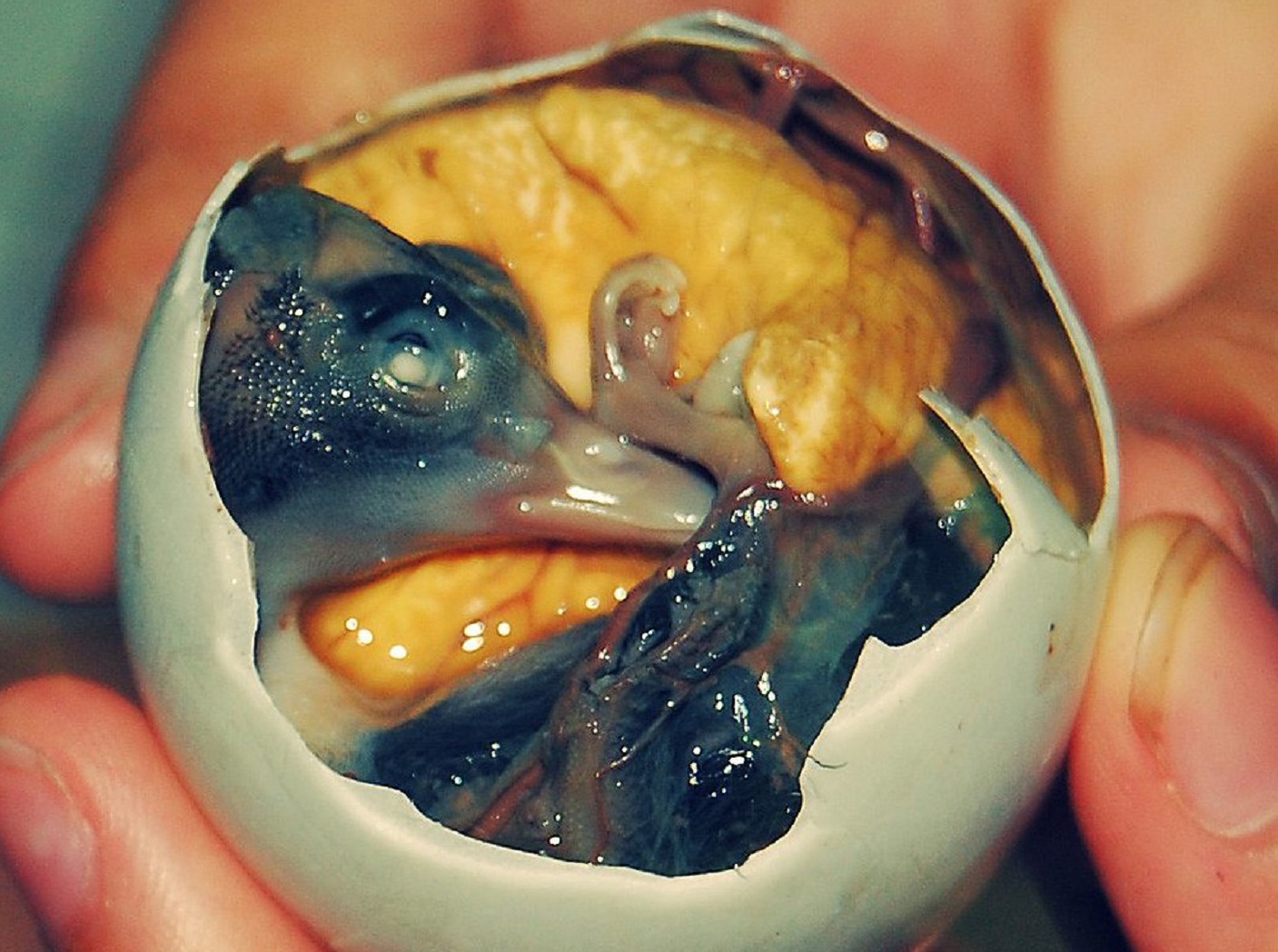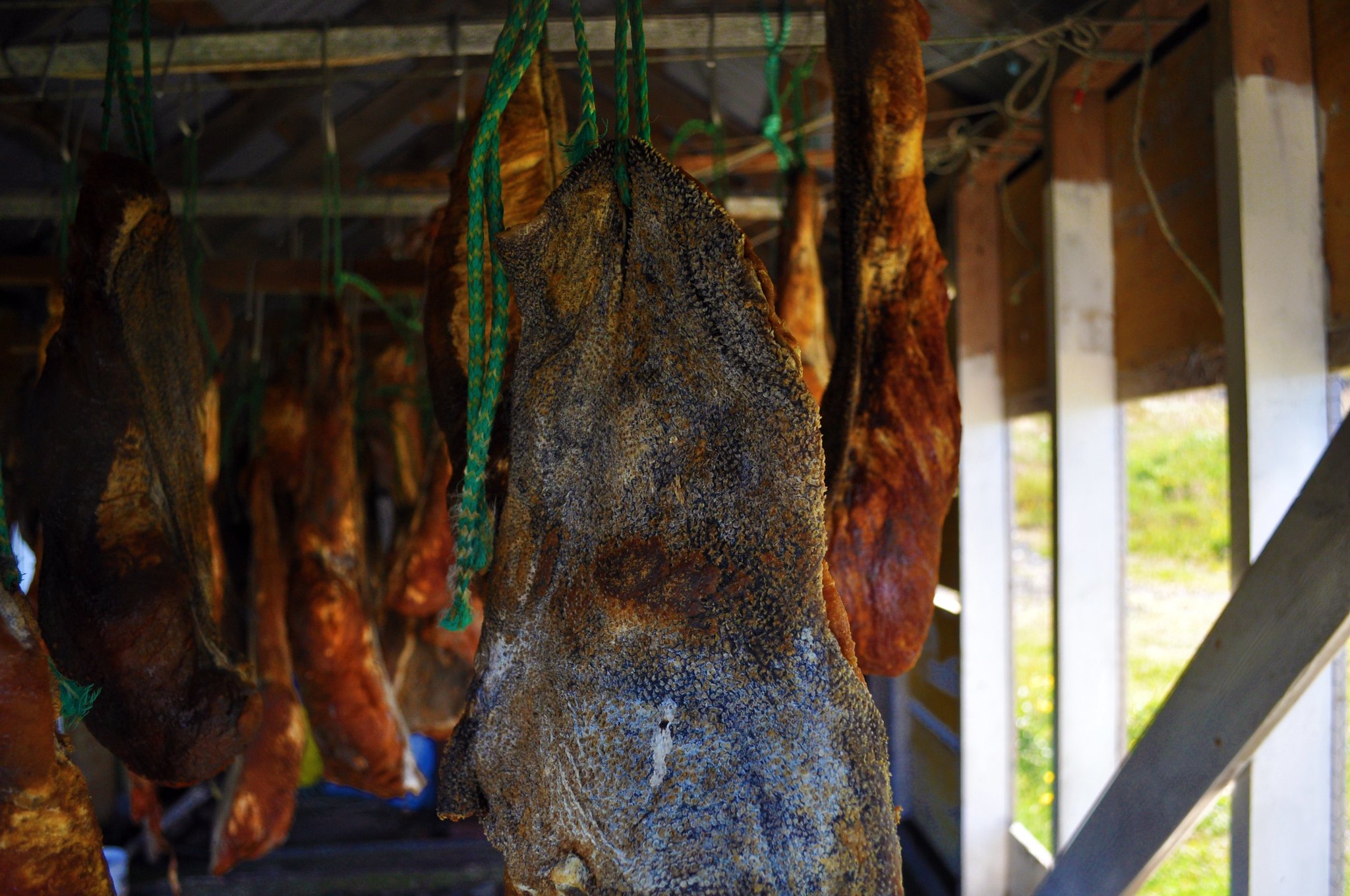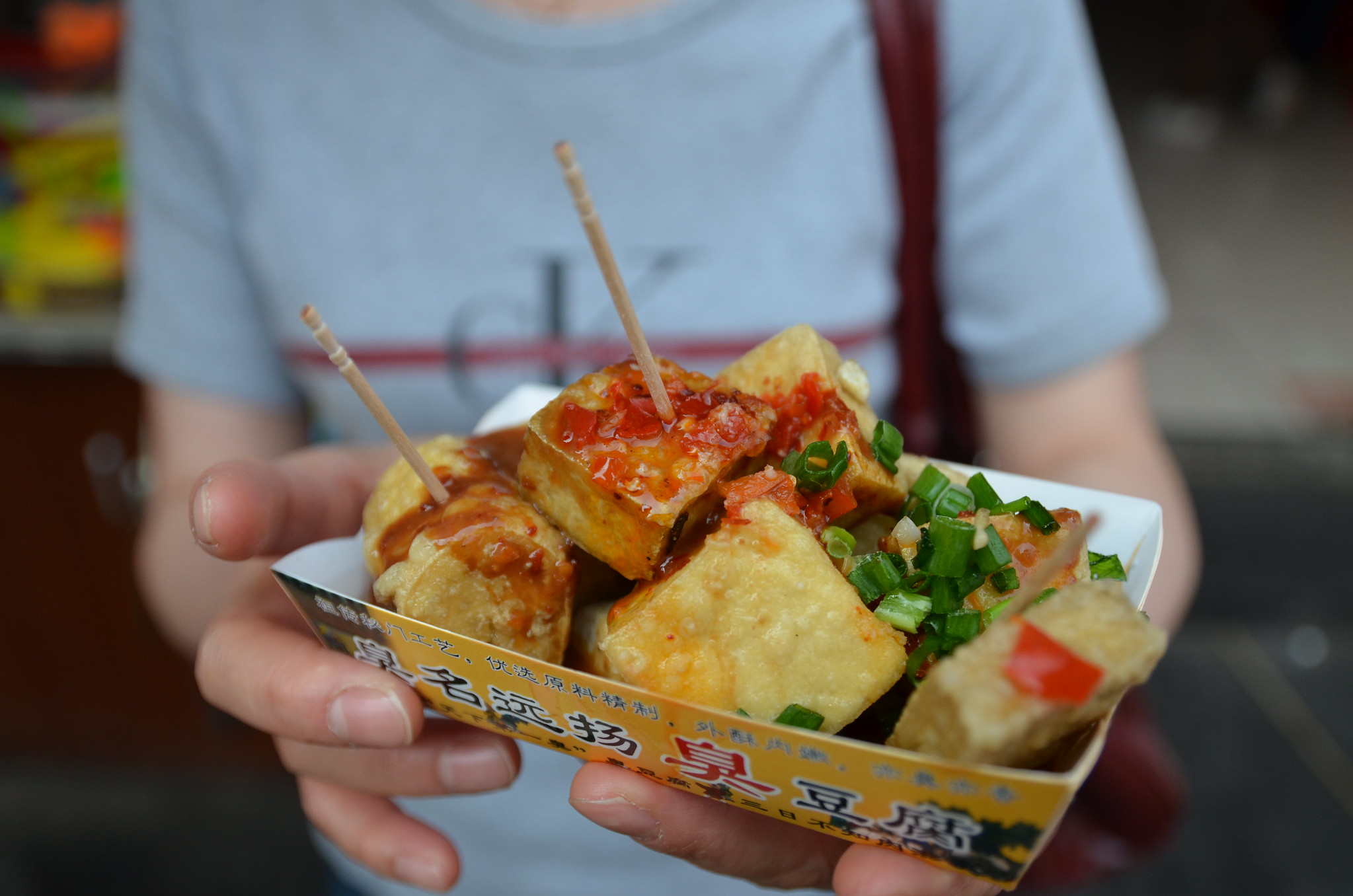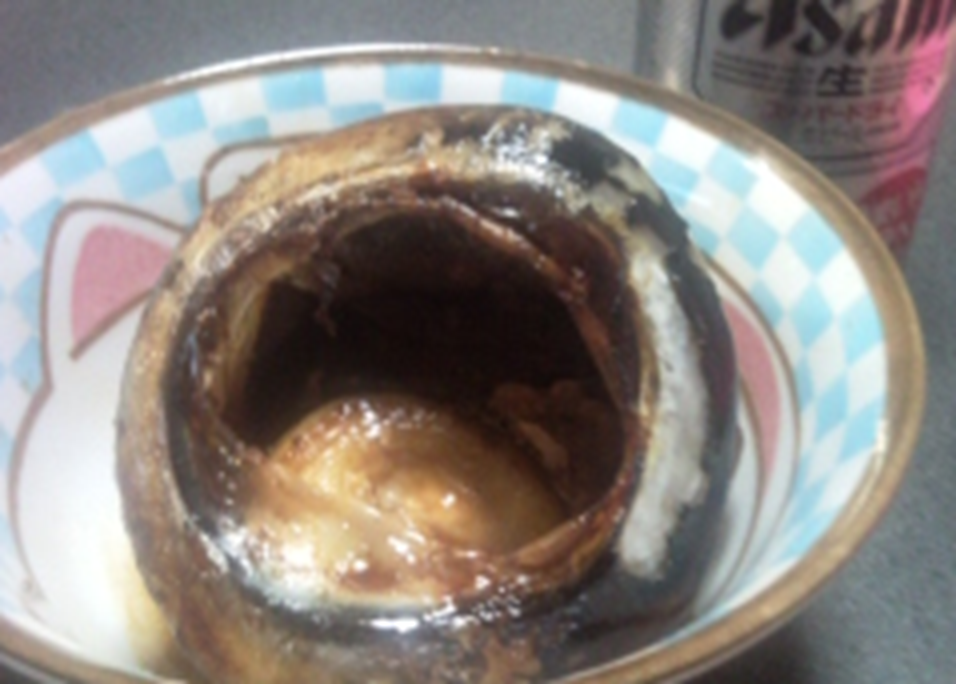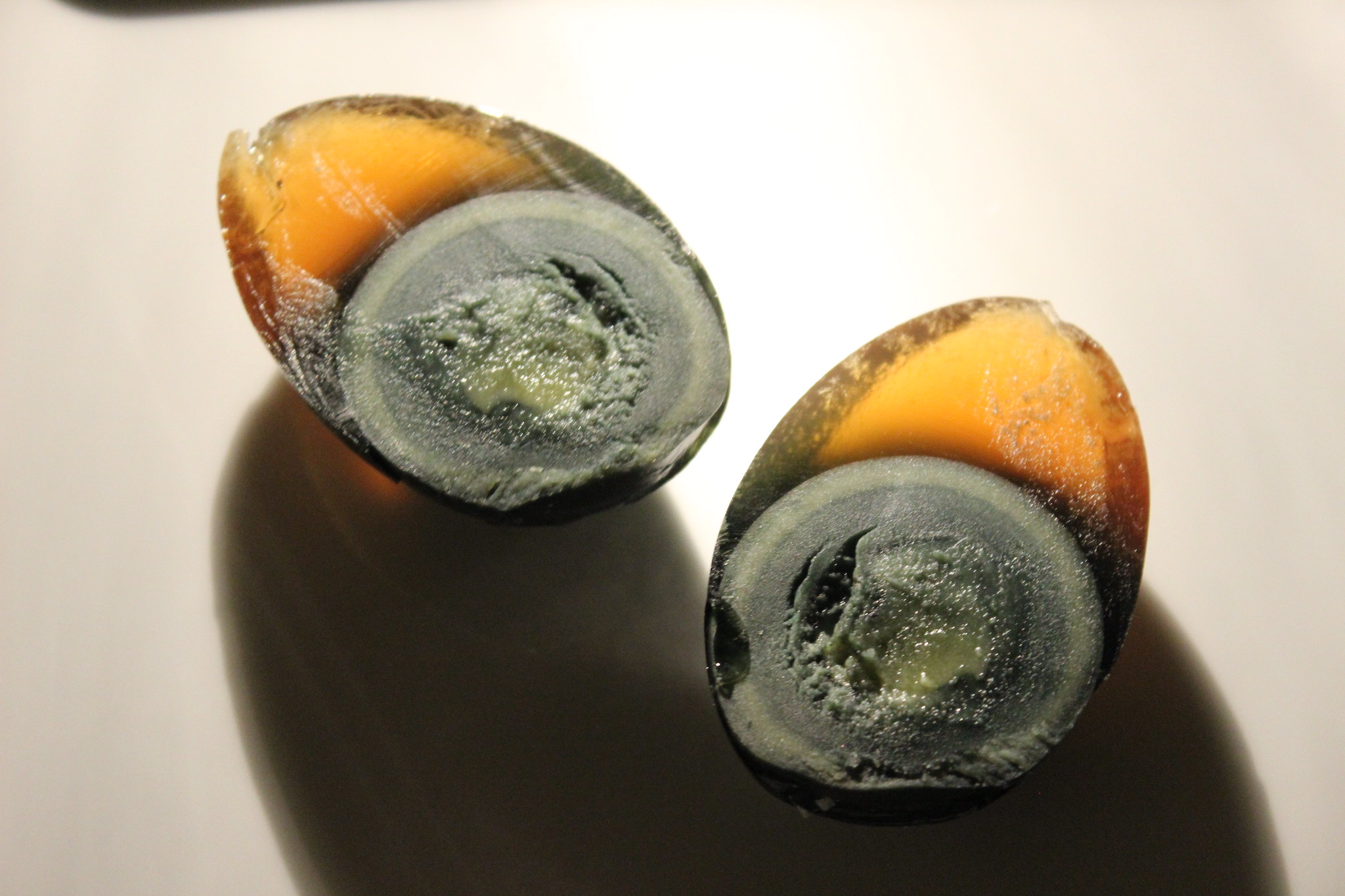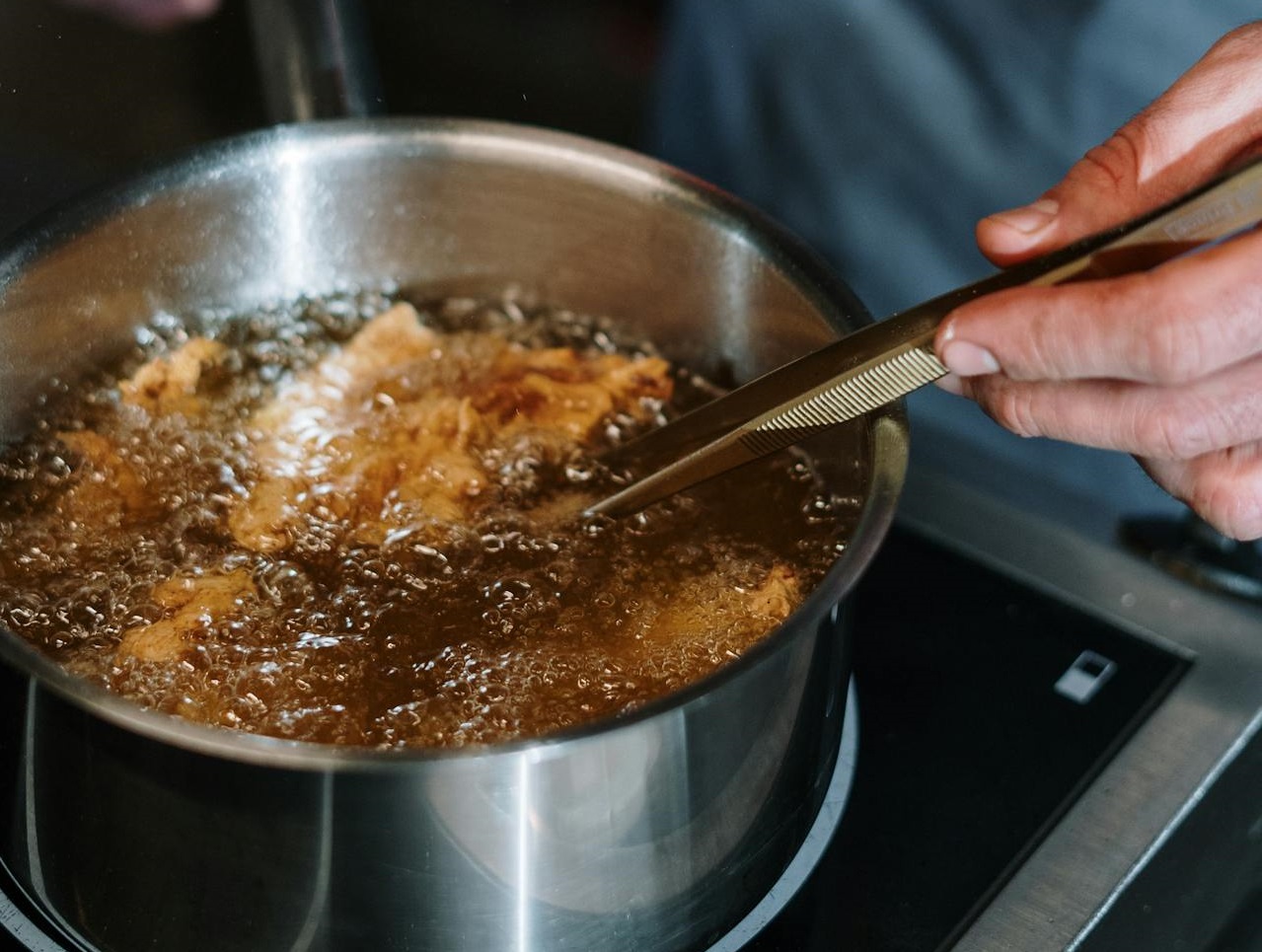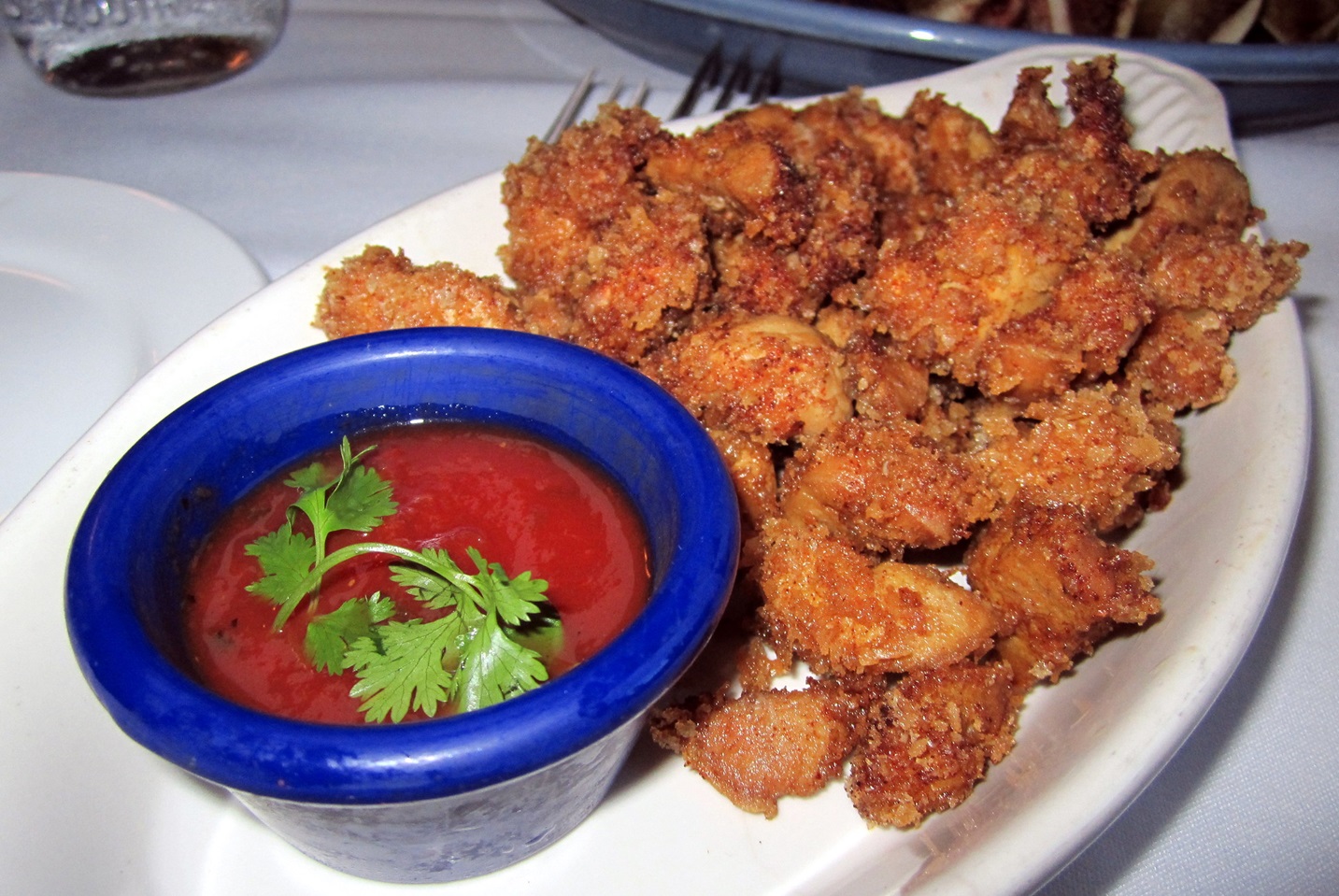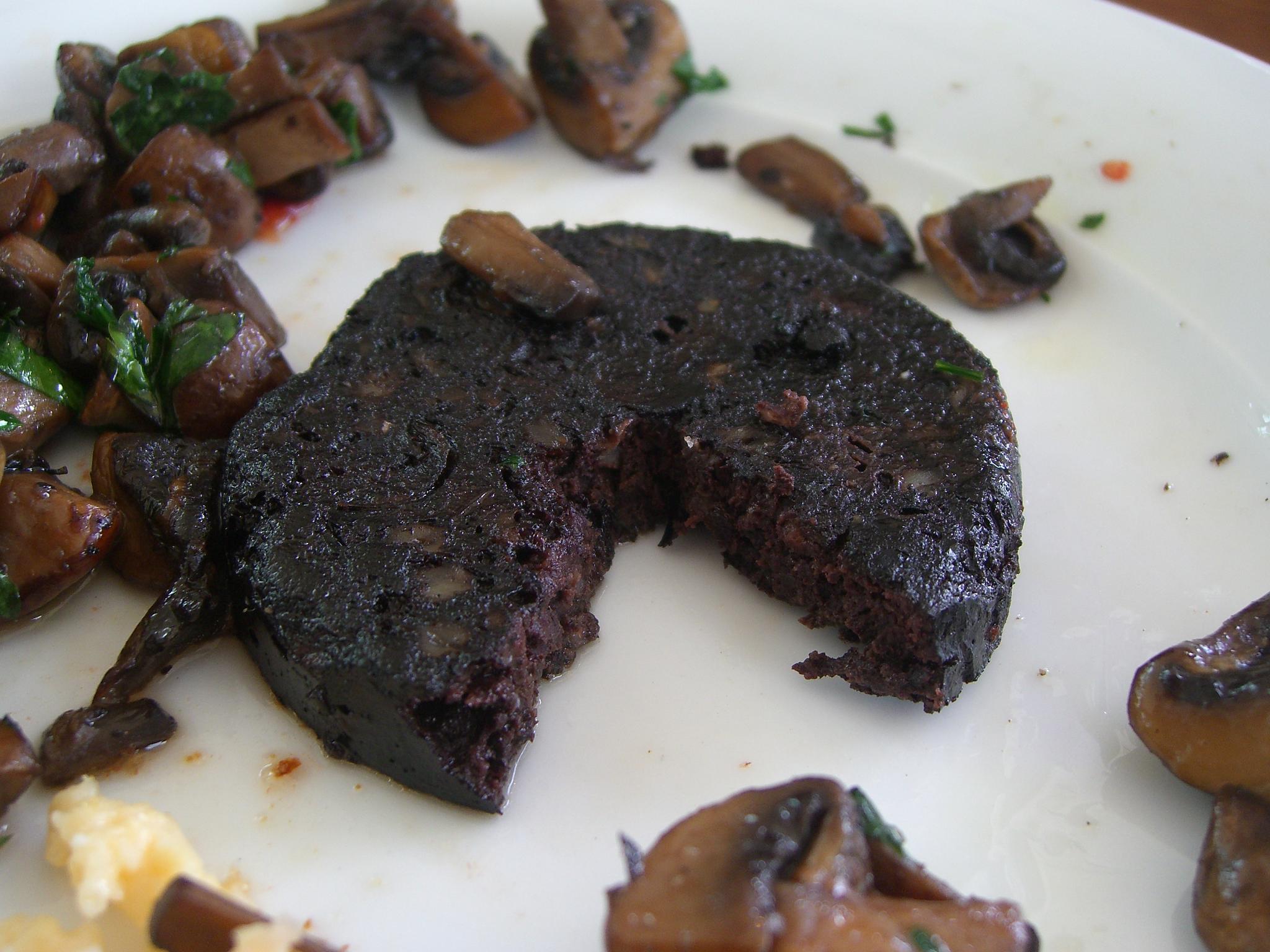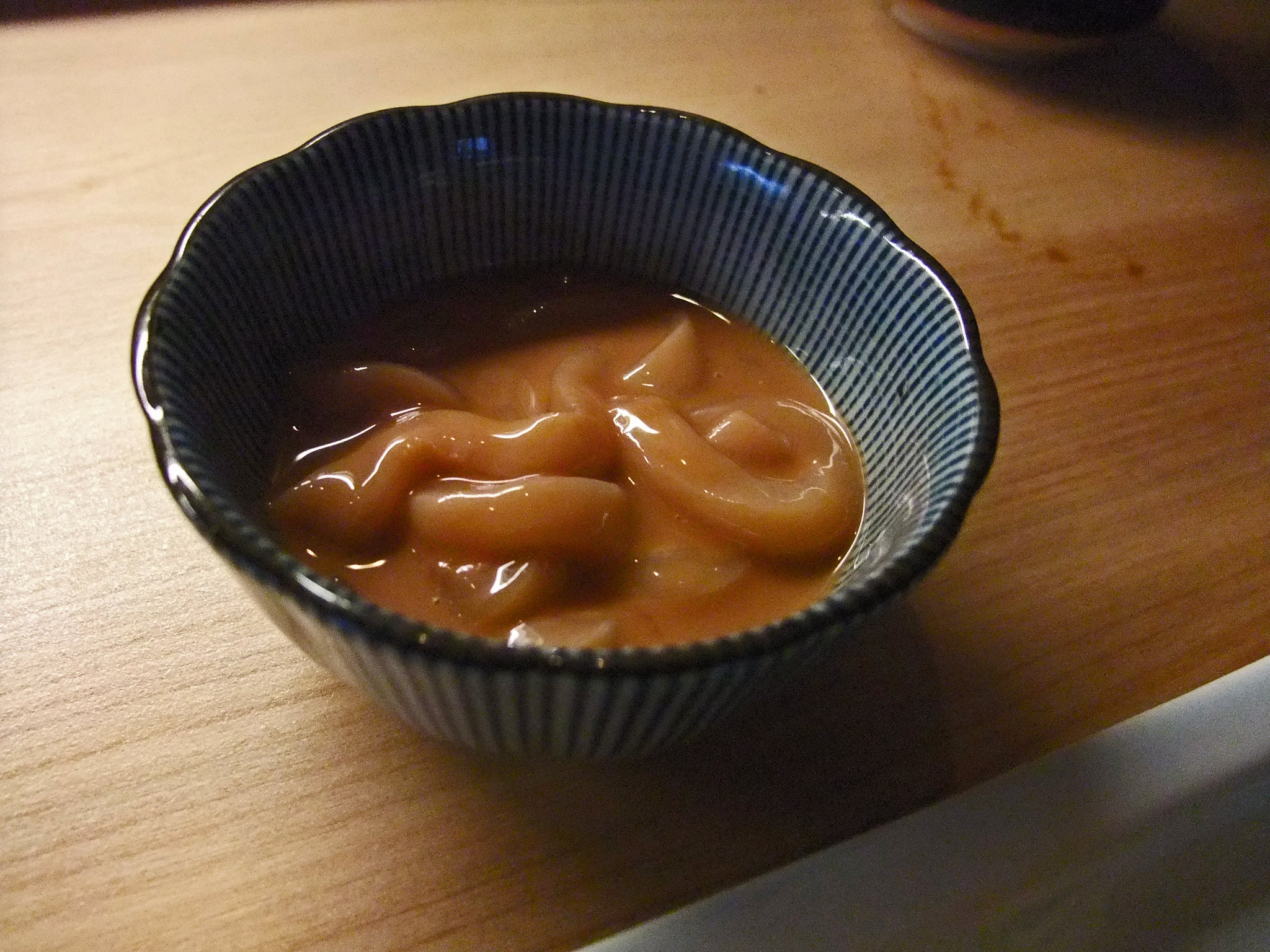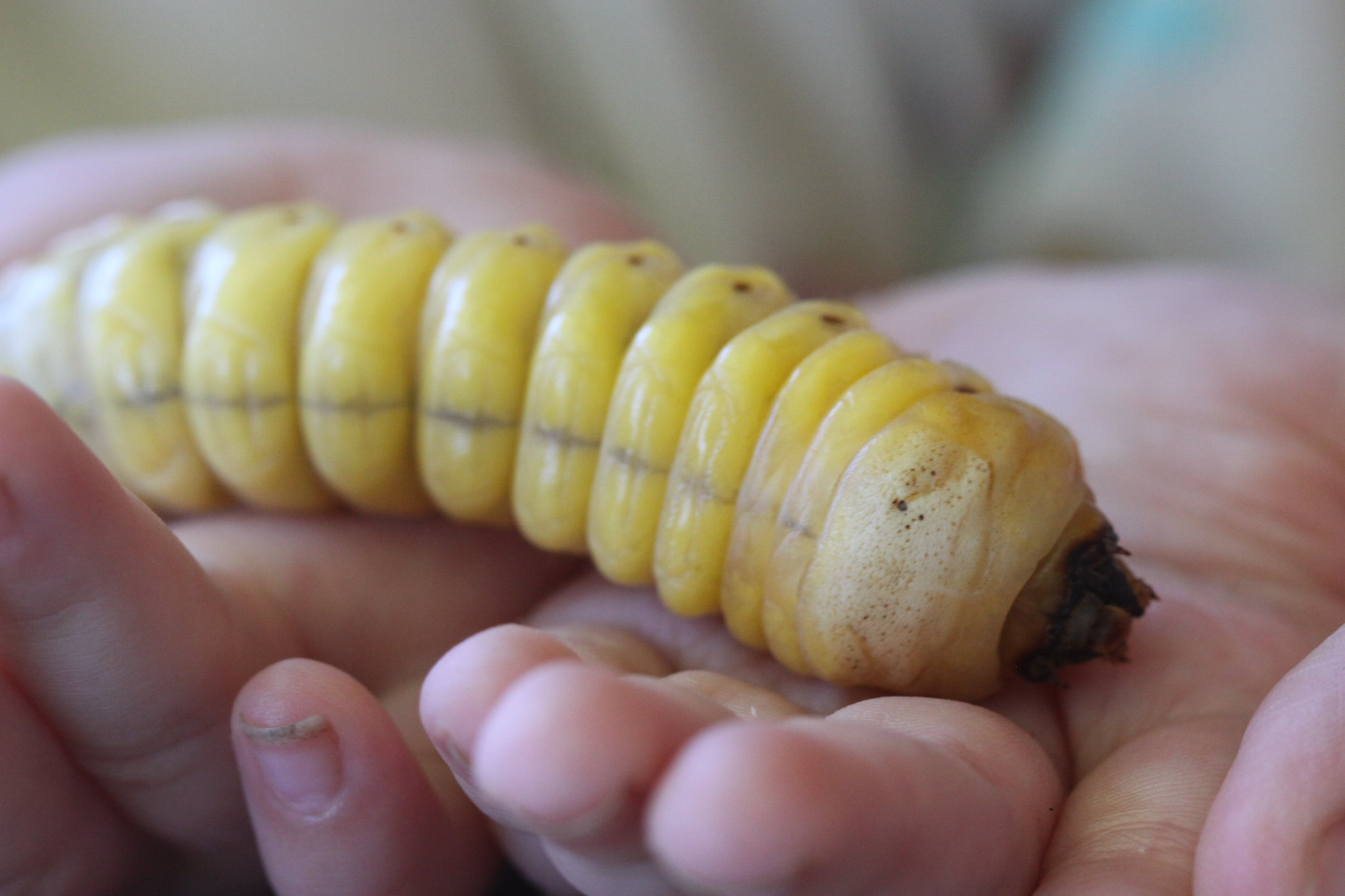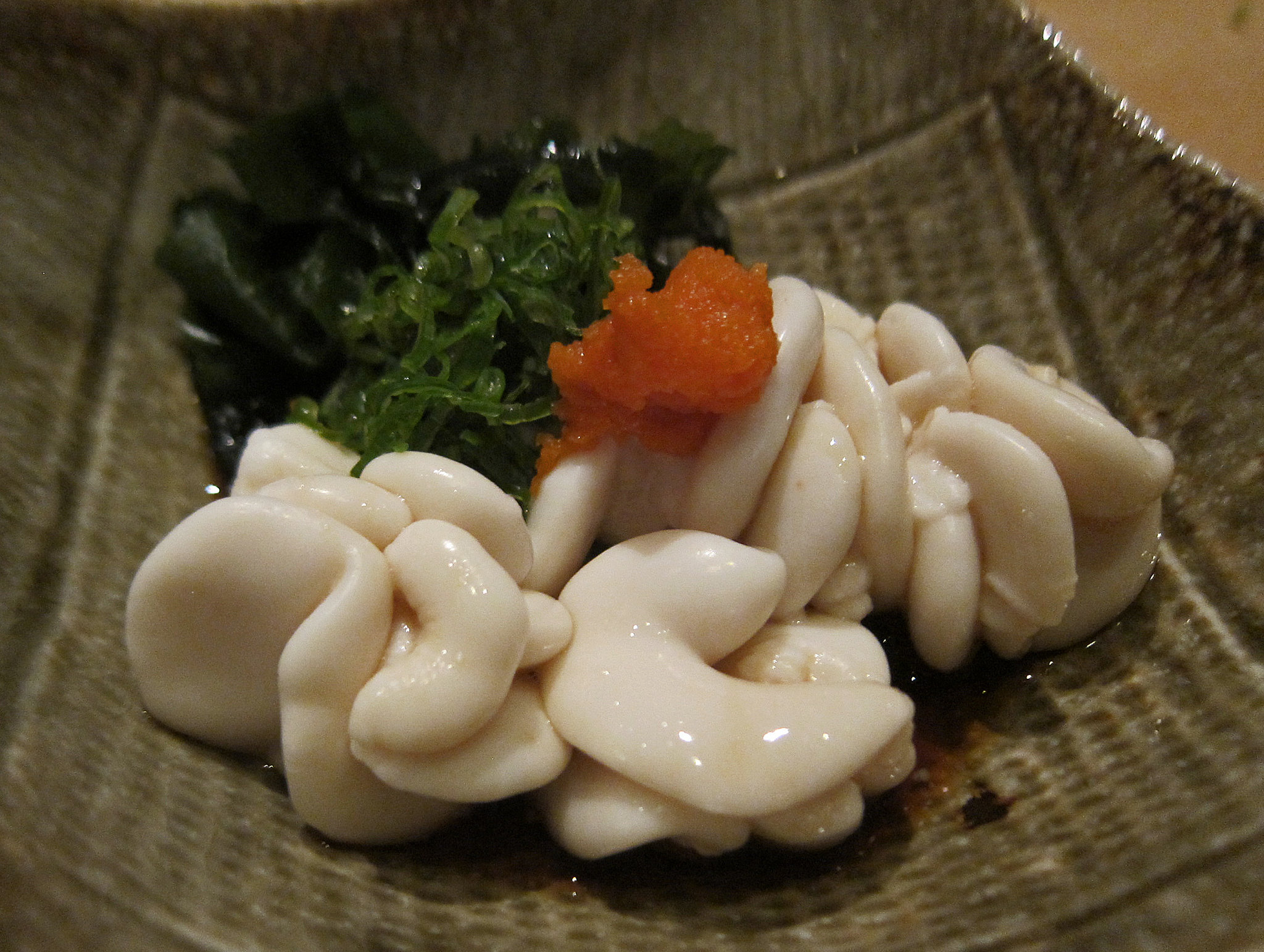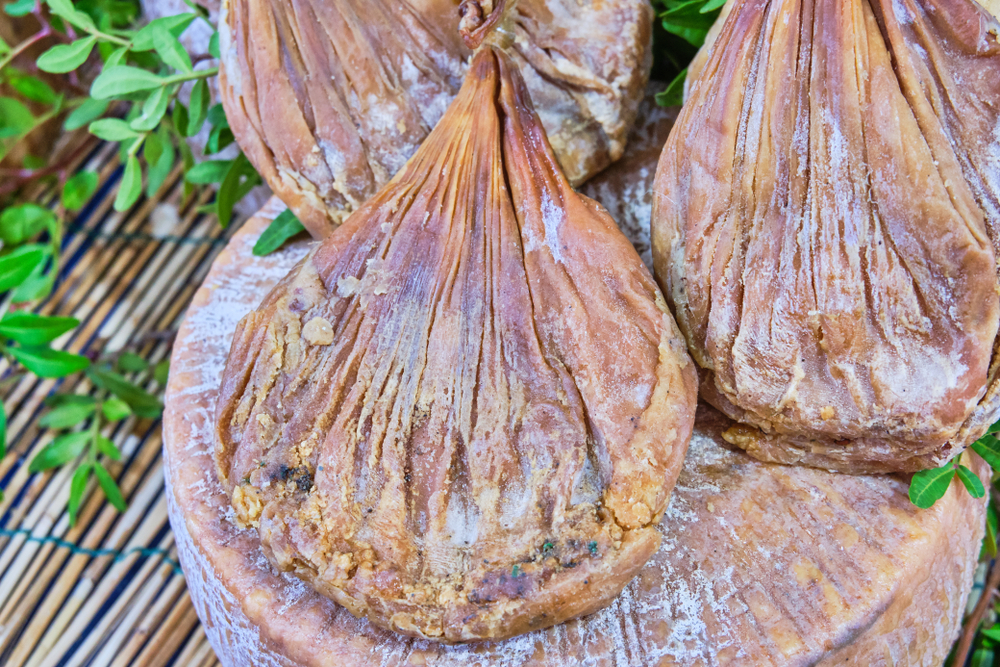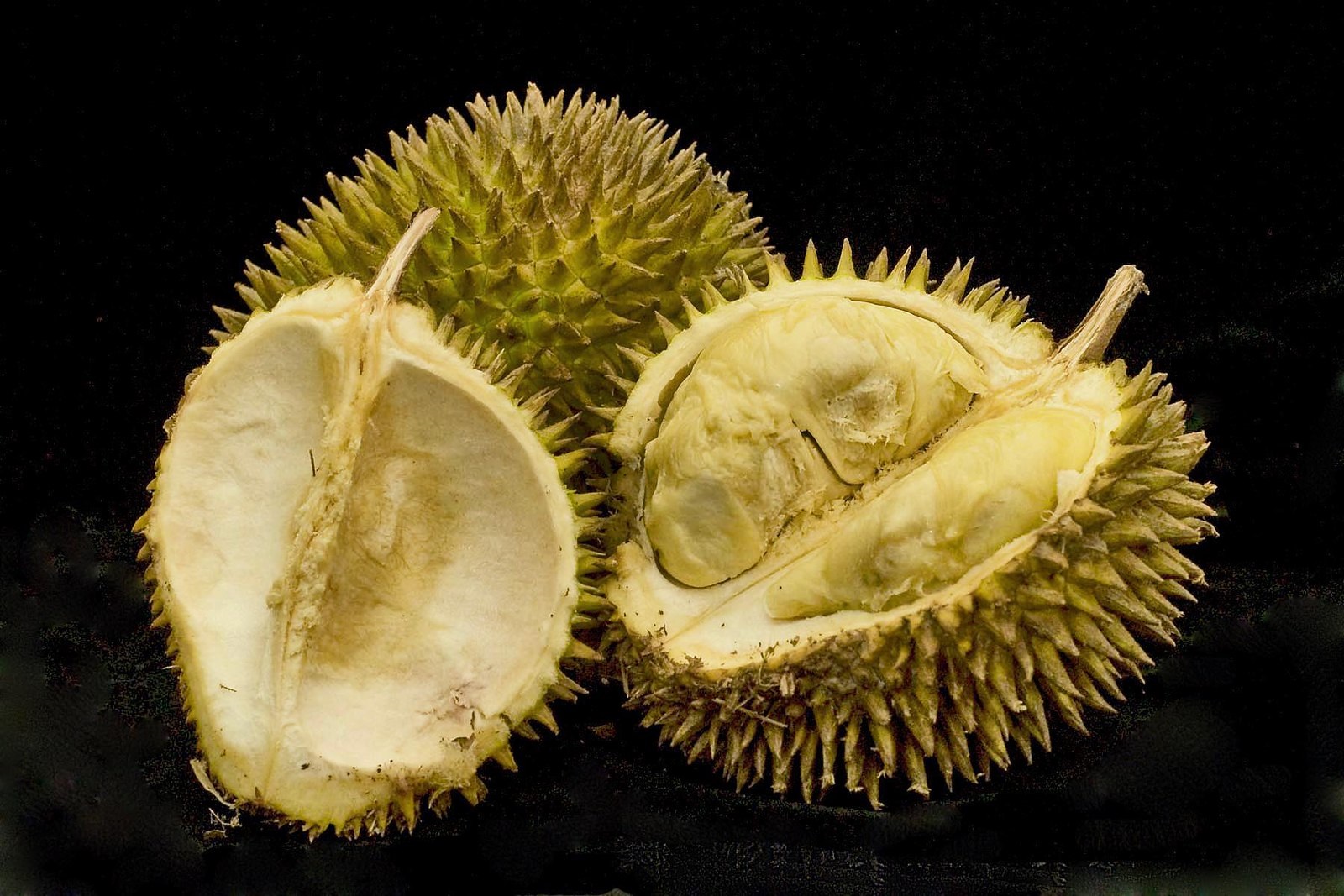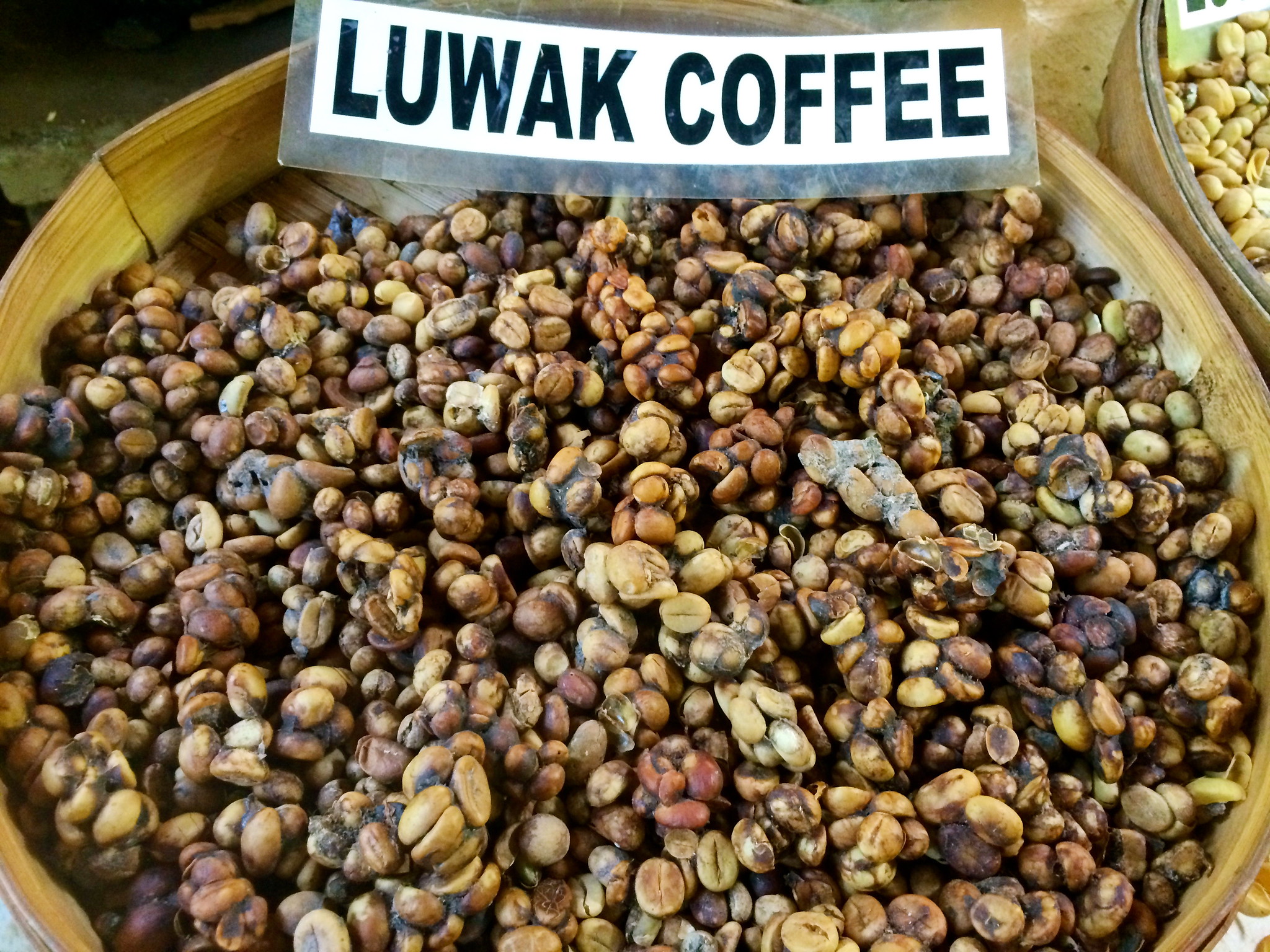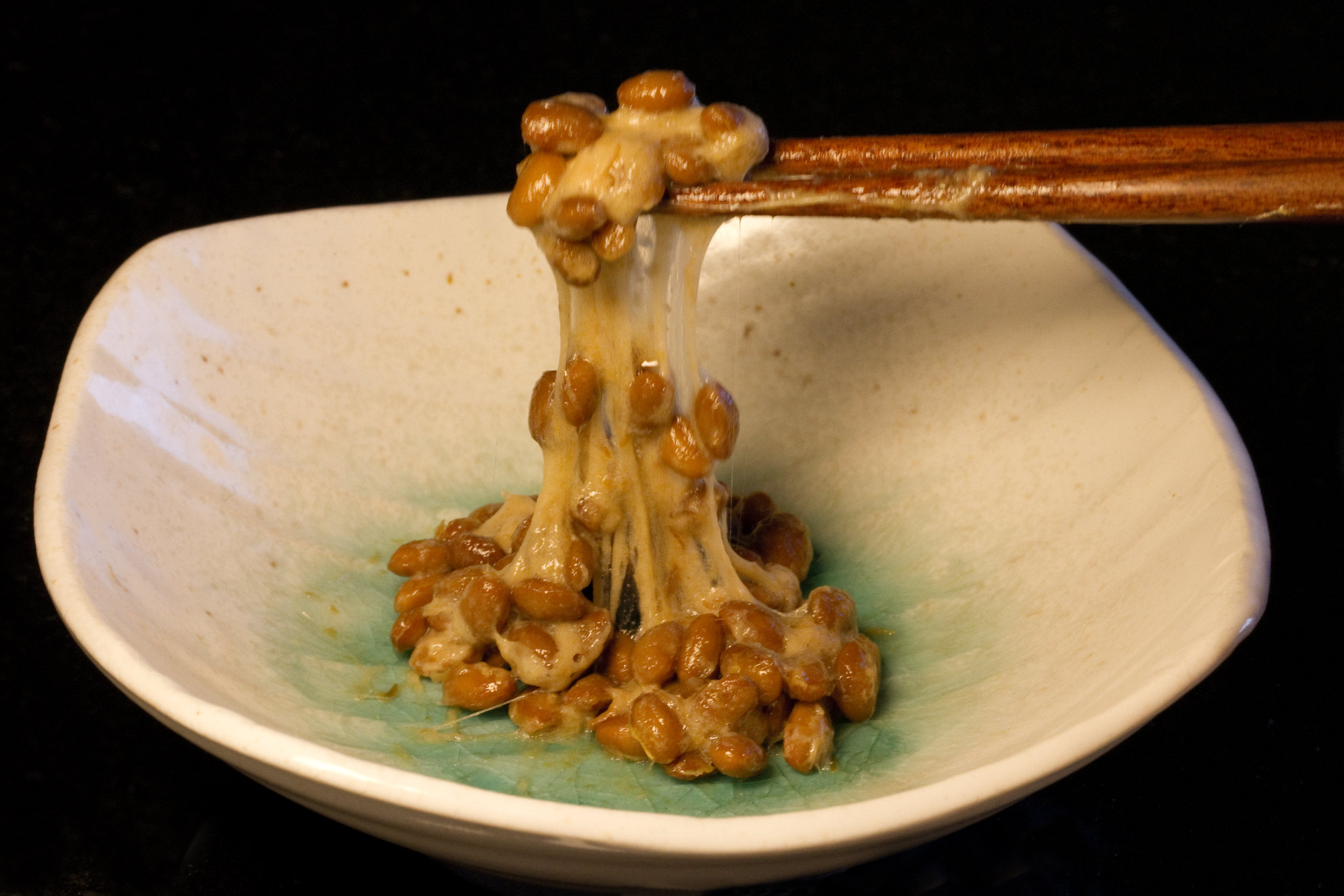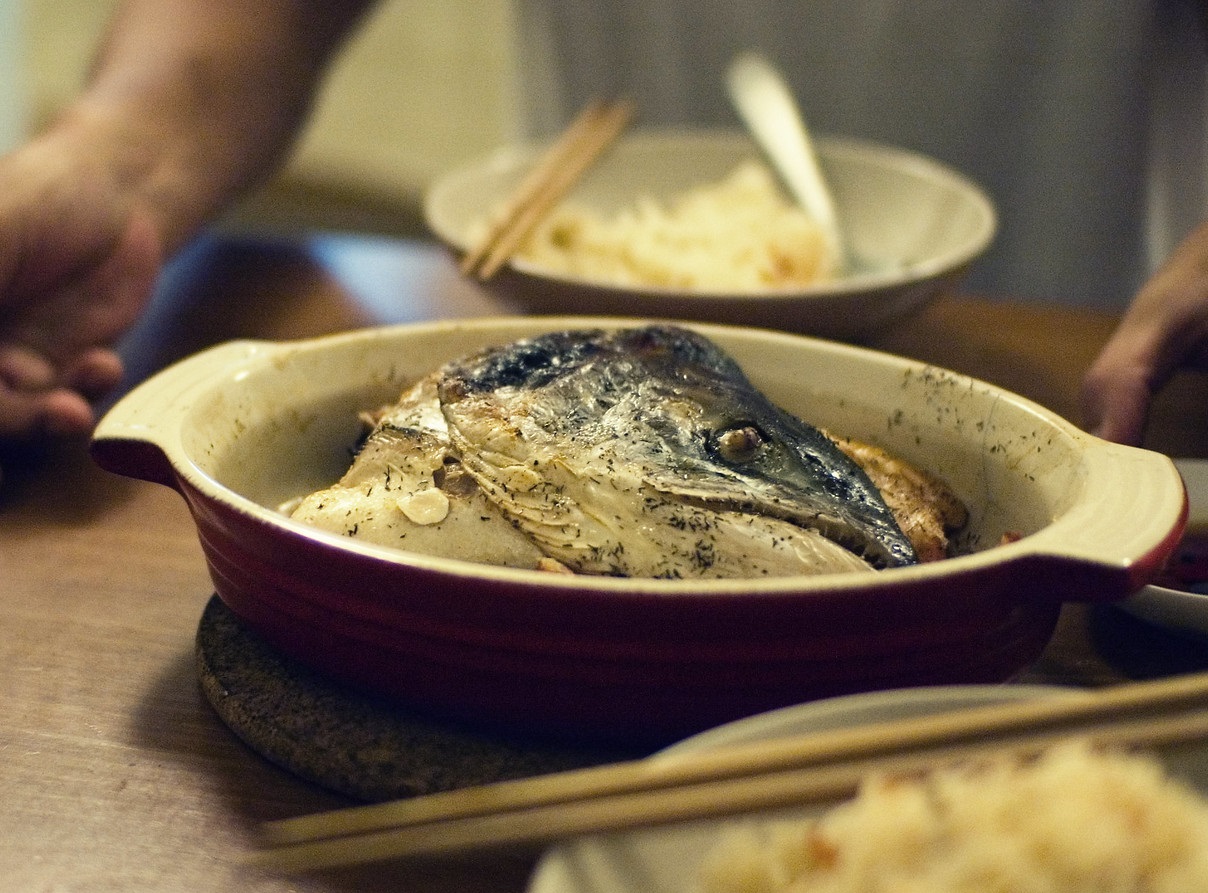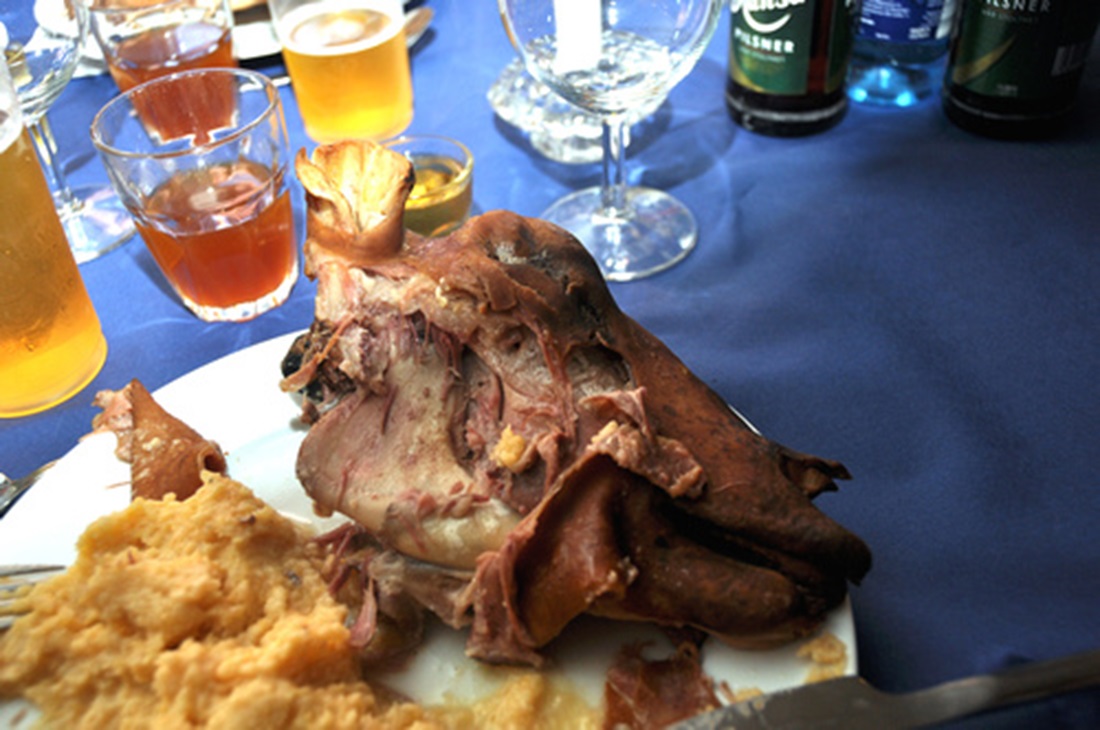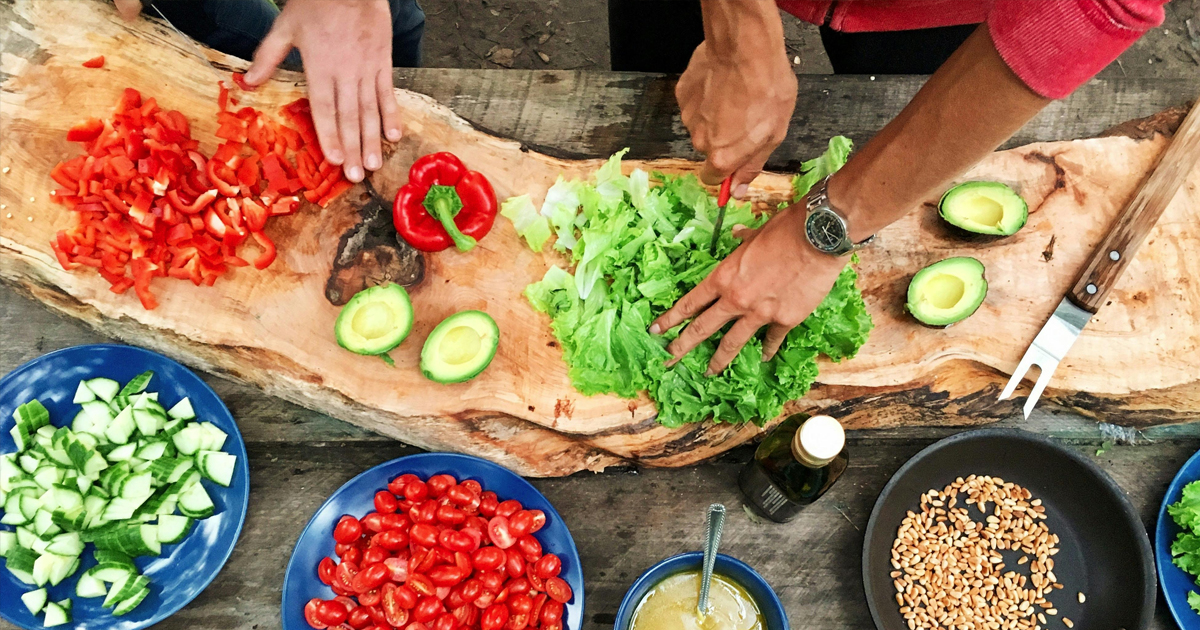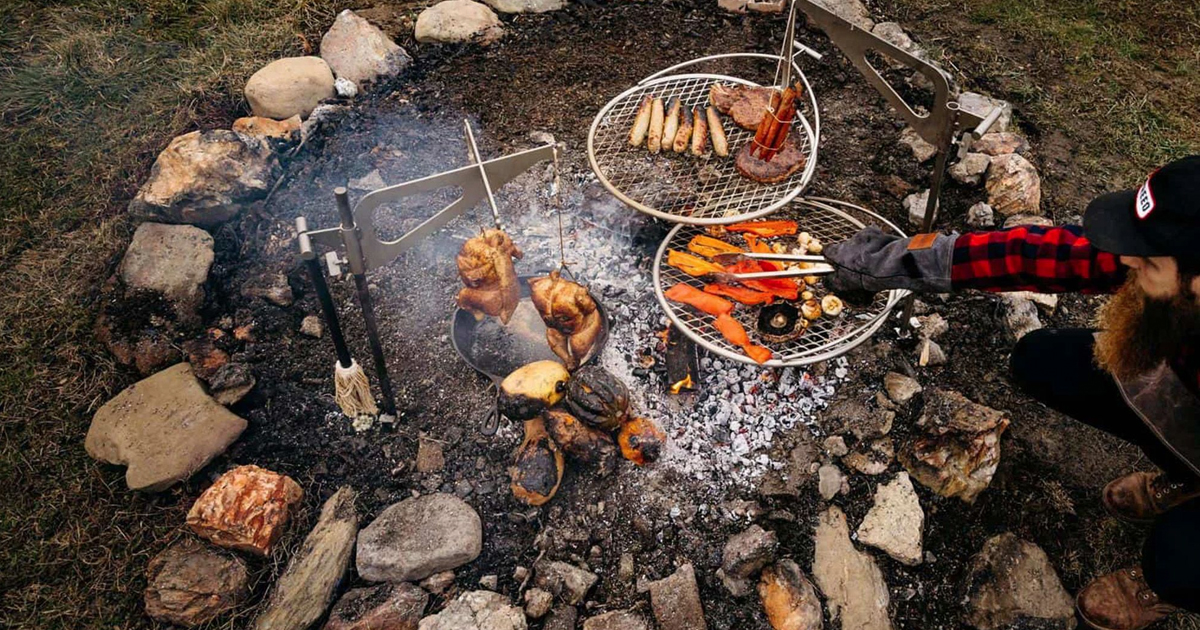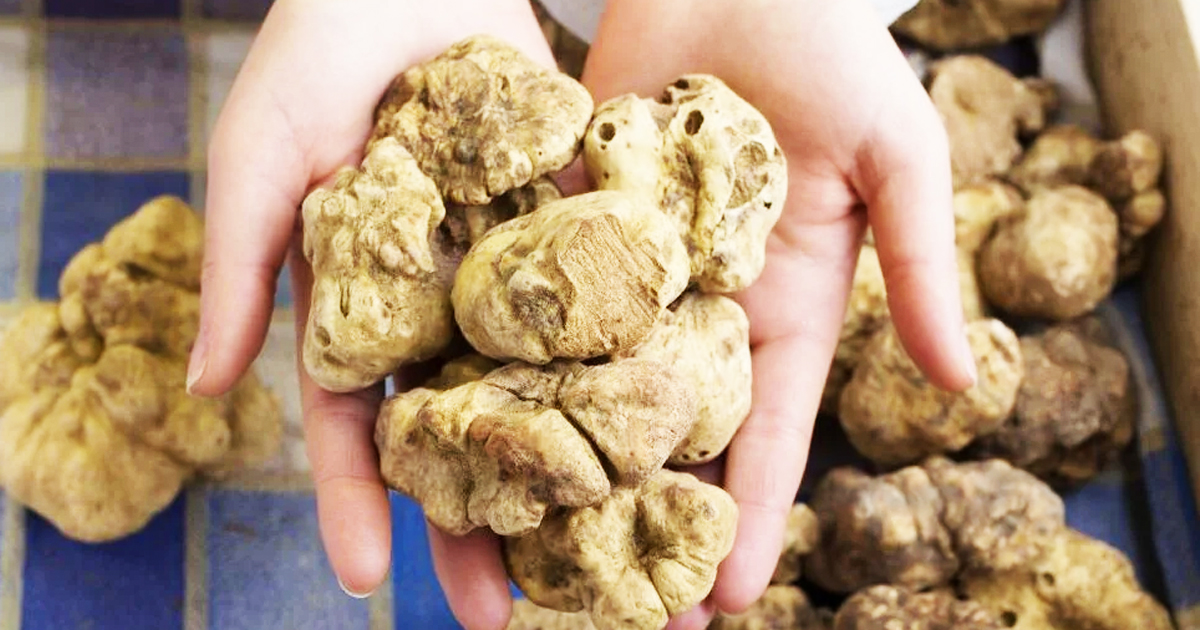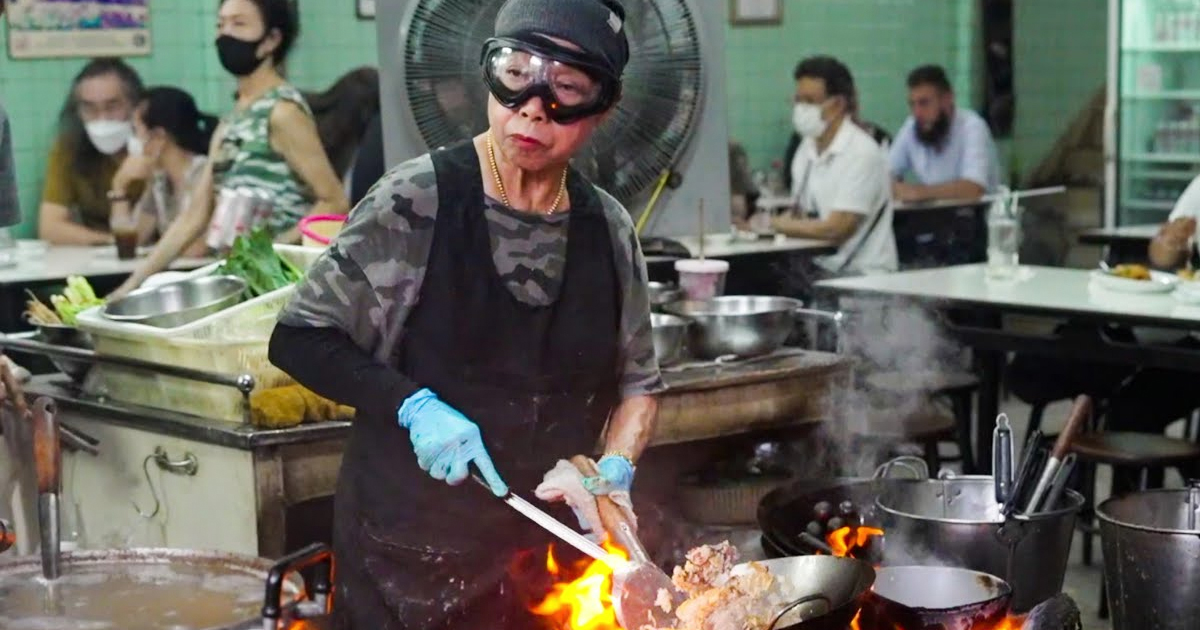Not So Yummy In Our Tummy
We're pretty open-minded and gastronomically adventurous. But we can't imagine ever being hungry enough to give these foods a try. Or could we?
Italy: Casu Marzu
Casu Marzu sounds pretty fancy right? But what if we told you that Casu Marzu literally translates to "Maggot Cheese"? Because it does! Pecorino cheese is a natural home for maggots and so, back in the old days, they would take the top off the cheese and let those maggots go to work. If you’re wondering how this is safe or hygienic—it isn't. In fact, Casu Marzu is now illegal.
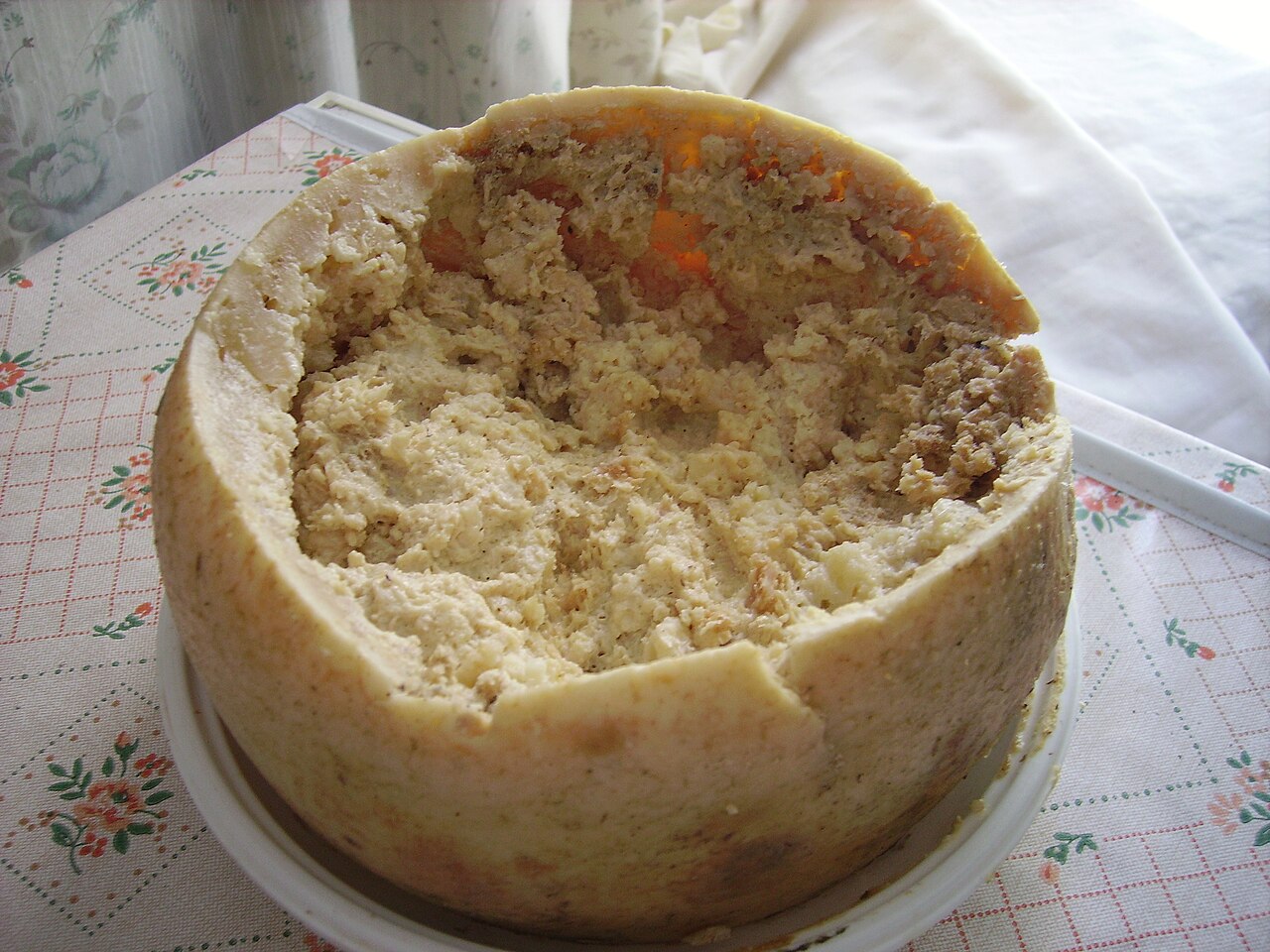 Shardan, CC BY-SA 2.5, Wikimedia Commons
Shardan, CC BY-SA 2.5, Wikimedia Commons
Philippines And Vietnam: Balut
While the name sounds very similar to Mowgli's big loveable bear BFF in The Jungle Book, Balut is nowhere close to being as sweet and kid-friendly as Baloo. In fact, it's kind of horrific. Balut is a partially developed chicken or duck embryo boiled alive in the egg shell.
Greenland: Kiviak
Take a seal skin and stuff it with up to 500 whole auks (a variety of seabird). Sew it up, cover it with rocks and let those birds ferment in the skin for months. Dinner is served. Whether you bite off the head and suck out the juices or just chow down on the whole bird, bones and all, how you eat your kiviak is up to you. If you decide to eat it at all, that is.
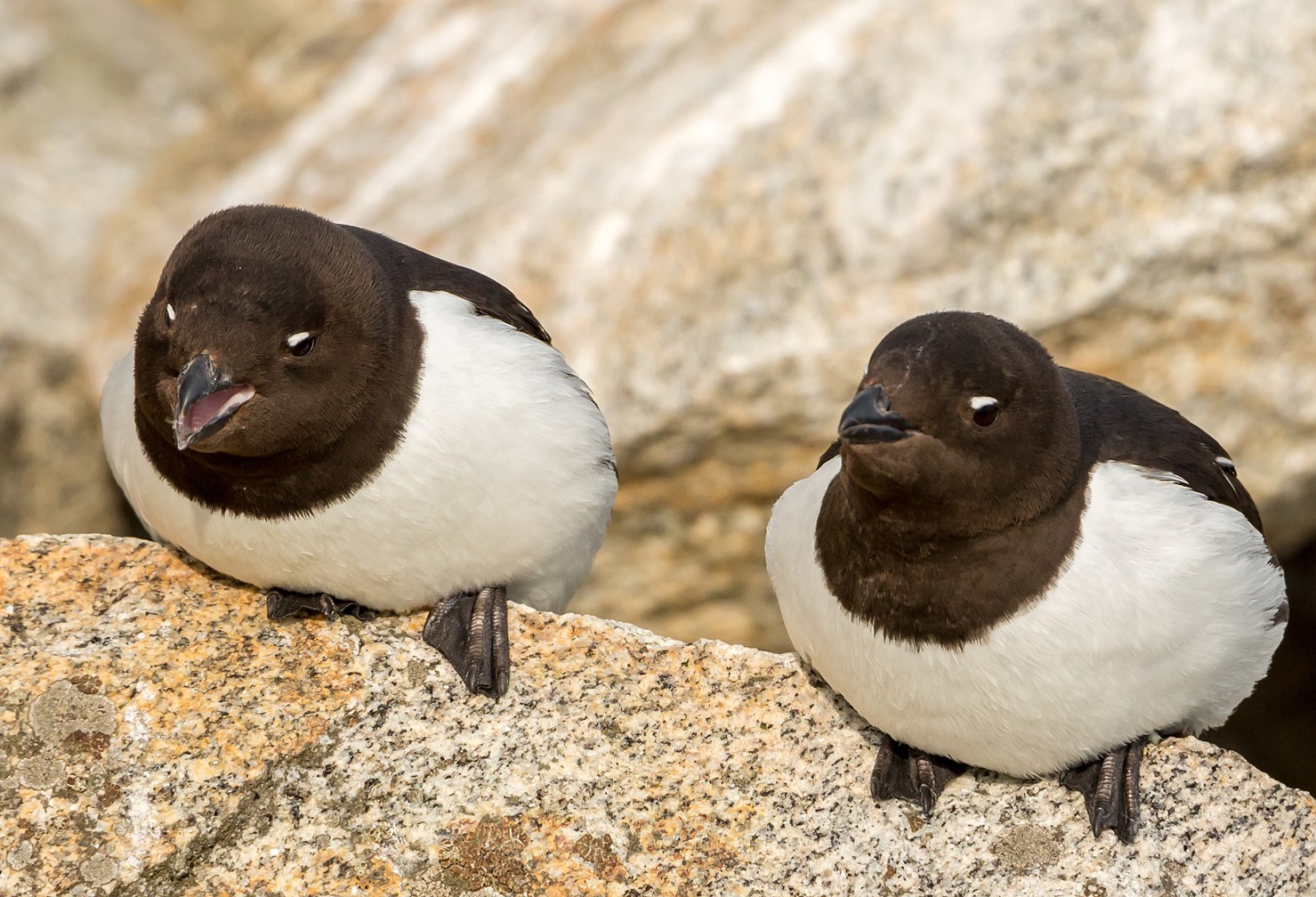 AWeith, CC BY-SA 4.0, Wikimedia Commons
AWeith, CC BY-SA 4.0, Wikimedia Commons
Iceland: Hákarl
How does a decomposed shark carcass sound? Using an old Viking technique, Greenland sharks are first buried in the ground for 6-12 weeks (this helps press away all the toxic fluids). After that, they are hung up to dry for months before it's time to eat them. Not only does this one taste bad, but it's been described as smelling like urine as well. Sounds like a lose-lose to us.
Japan: Jibachi Senbei
This is a relatively new addition to the world's disgusting cuisine. The brainchild of a group of Digger Wasp lovers and a biscuit maker, Jibachi Senbei is a rice cookie snack with whole wasps in it. On the plus side, it's high in protein.
China: Virgin Boy Eggs
No, this isn't what you think—but it might be worse! A delicacy in certain parts of China, Virgin Boy Eggs are eggs cooked in boy's urine. We wish we were making this up.
 Dromafoobeno, CC BY-SA 3.0, Wikimedia Commons
Dromafoobeno, CC BY-SA 3.0, Wikimedia Commons
Sweden: Surströmming
Surströmming is fermented herring. What's so disgusting about that, you ask? Well, the herring, which is fermented in brine for six months, is one of the worst smelling foods in the world. When a German landlord was taken to court after evicting a tenant for opening a can of Surströmming inside the building, he won his case when his lawyer opened up a can of the stuff in the courtroom.
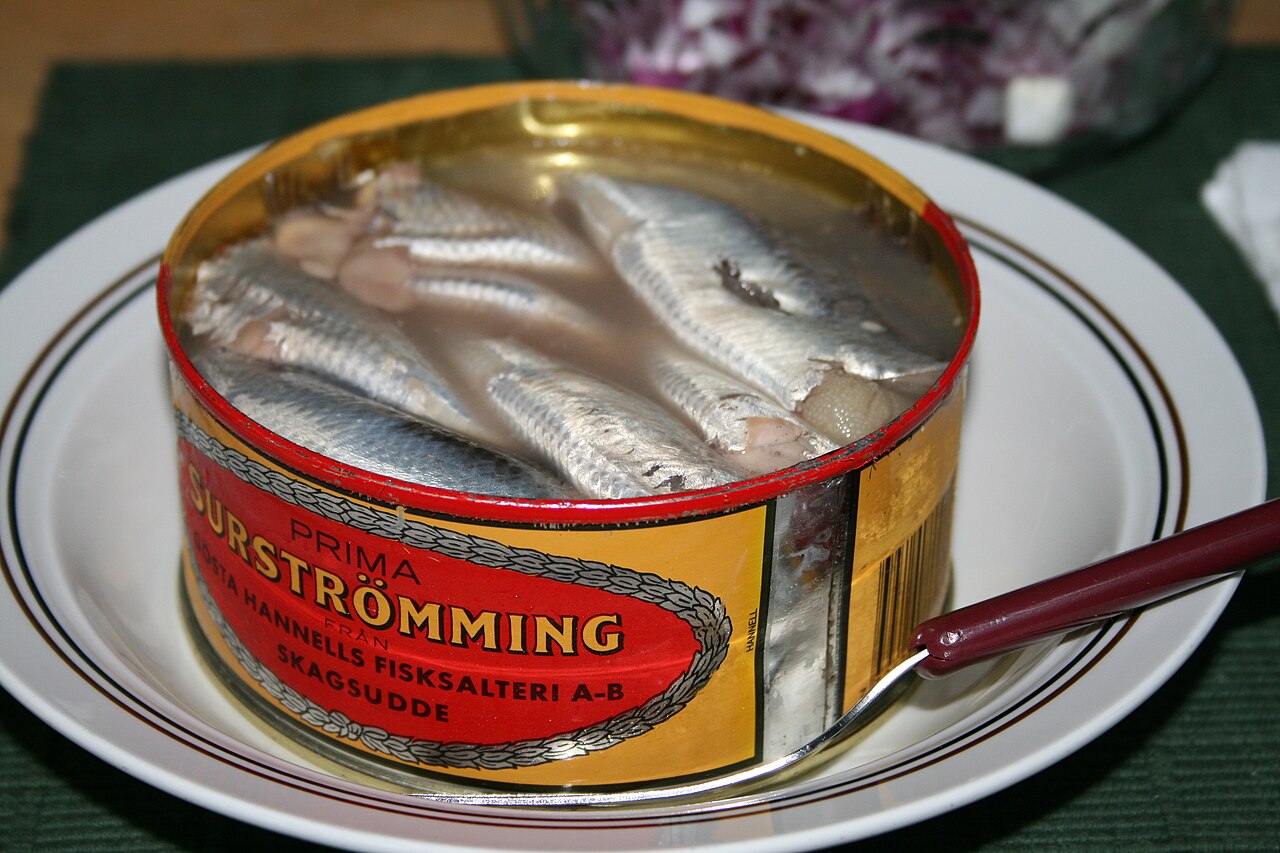 Wrote, CC BY 2.0, Wikimedia Commons
Wrote, CC BY 2.0, Wikimedia Commons
China, Hong Kong, Taiwan: Stinky Tofu
Sticking with the smelly theme, we have stinky tofu. This is tofu that has traditionally been fermented for months (or just a couple days when produced in a factory) and the strong smell is its calling card—think rotten garbage and used baby diapers. The good news is that it’s said to taste somewhat egg-like and much better than the smell would indicate. Although the aftertaste has been described as tasting like urine.
Namibia: Warthog Anus
No beating around the bush with this one. It's exactly what it sounds like. It's also the food that iconic chef Anthony Bourdain called the "worst meal" of his life.
 Peabody Awards, CC BY 2.0, Wikimedia Commons
Peabody Awards, CC BY 2.0, Wikimedia Commons
Vietnam: Cobra Heart
Like picking your lobster from the tank at a seafood restaurant, there are restaurants in Vietnam that have multiple live cobras on hand for patrons to choose from. The heart is cut out and placed into a shot glass with rice wine and snake blood. Drink up.
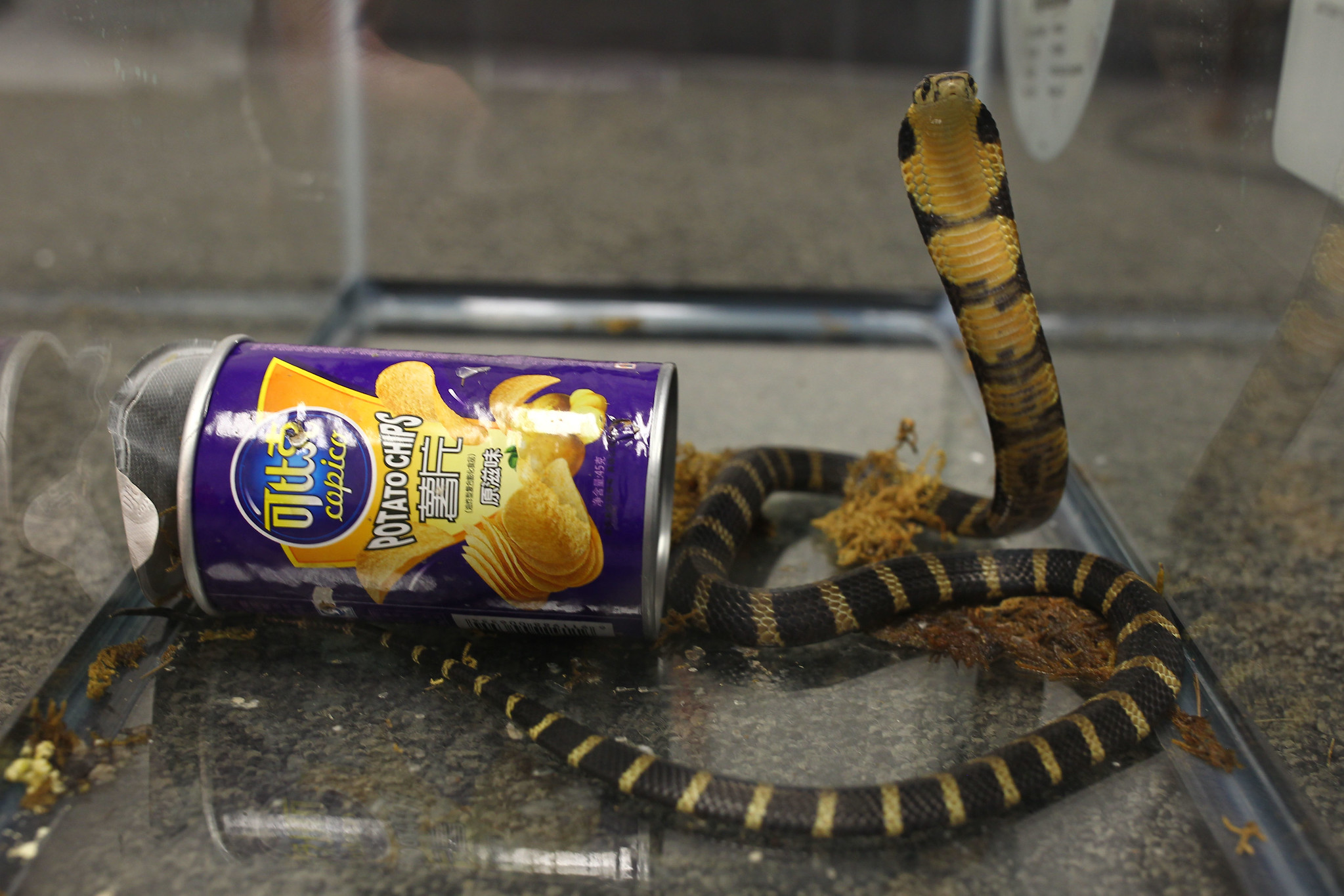 USFWS Pacific Southwest Region, Flickr
USFWS Pacific Southwest Region, Flickr
Greenland: Ptarmigan Poo
The ptarmigan is a white game bird whose poo is a delicacy in Greenland. If that doesn't sound disgusting enough, it’s cooked with chunks of seal meat in a pot of rancid seal oil.
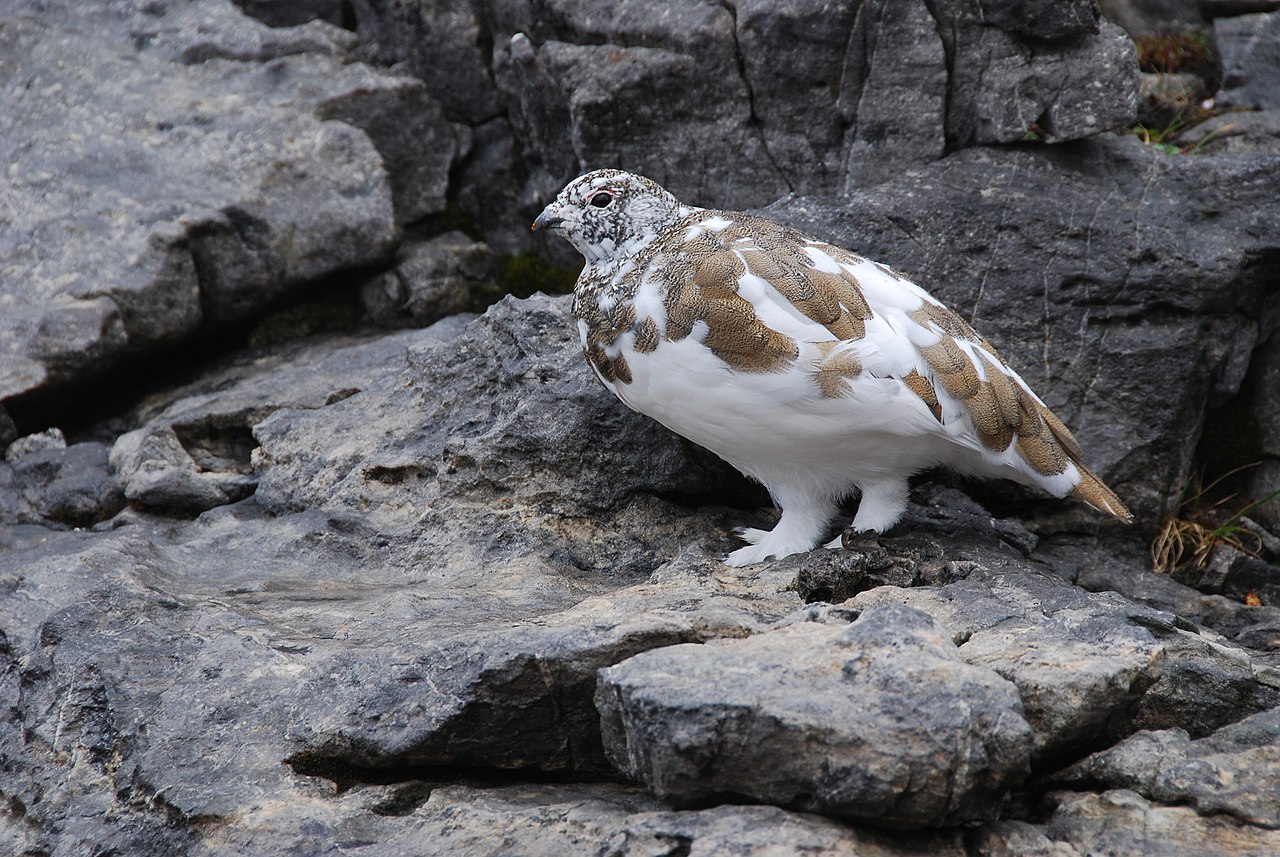 Don N. Page, CC BY-SA 4.0, Wikimedia Commons
Don N. Page, CC BY-SA 4.0, Wikimedia Commons
Japan: Medama
In Japan in the early '90s, there was a lot of talk in the media about the benefits of Omega 3s, and you know what has a lot of Omega 3s? Tuna eyeballs. And so Medama—tuna eyeballs—became a thing in the Land of the Rising Sun.
USA: Wormzels
We love a good linguistic portmanteau as much as the next person. But the culinary combination of a worm and a pretzel isn't something we can really get behind.
 Krakenimages.com, Shutterstock
Krakenimages.com, Shutterstock
China: Pidan
You might know them better as century eggs, black eggs, or millennial eggs. But whatever you call them, they are super stinky rotten eggs that have been covered with salt, clay, and ashes and left to cook for 100 days. When all is said and done, you have something that has been said to taste like a regular hard-boiled egg, but with the flavor punched up by like 1000%. Tempted?
Cambodia: Fried Tarantula
You had us at "fried", and lost us at "tarantula".
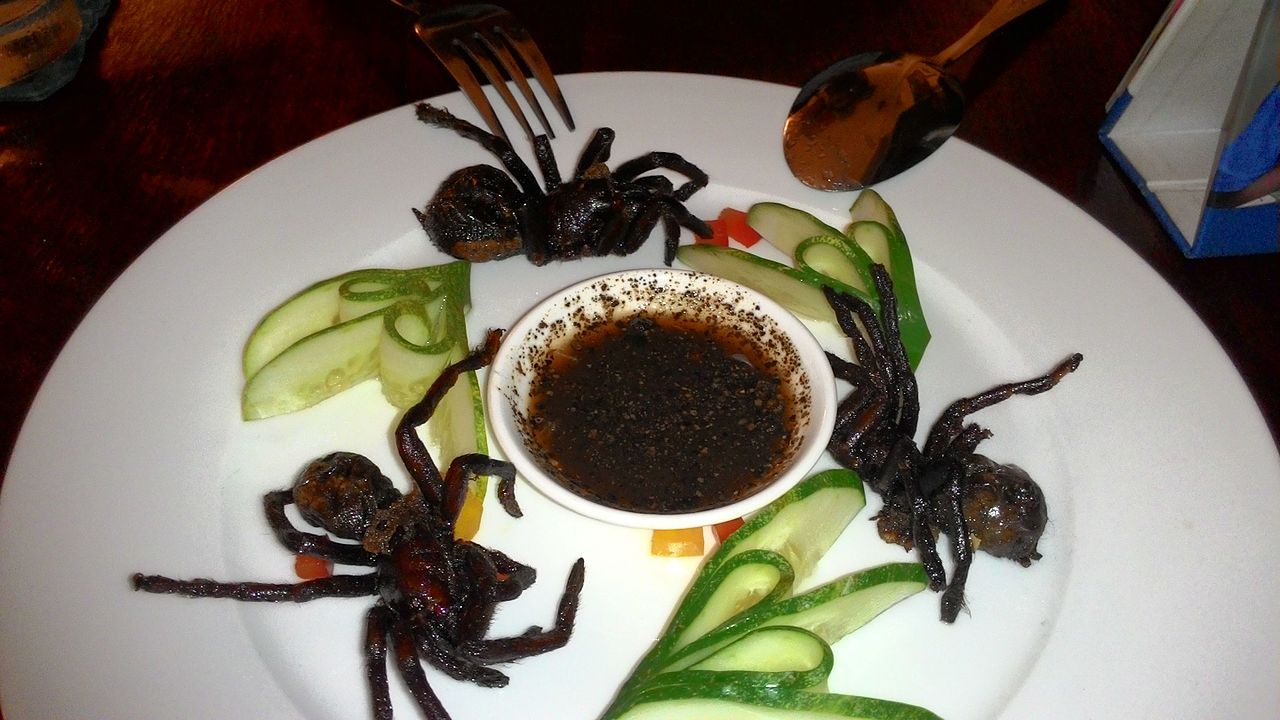 Jaiprakashsingh, CC BY-SA 3.0, Wikimedia Commons
Jaiprakashsingh, CC BY-SA 3.0, Wikimedia Commons
Canada: Jellied Moose Nose
Waste not want not. Back in the 1830s, when “wilderness wives” would make use of everything their hunting husbands brought home, the nose of the moose got used just like the rest of the animal. Boiled then left to chill in the broth, the meat sets up and creates a jelly consistency. In case you were wondering, they remove the nose hair before cooking it.
West America And Canada: Rocky Mountain Oysters
Before you get all excited about oysters we should tell you that these aren't actually oysters. They're fried young bull testicles. Still excited?
Africa, Americas, Asia, And Europe: Black Pudding
Again, we have to warn you from getting too excited by the pudding part. Because there really isn't anything "pudding" about this dish—which is, pork fat or beef suet mixed with oats or barley and seasoned with spices. Oh, sorry, we forgot one other ingredient... pork blood! Black pudding also goes by the name blood pudding.
Mexico: Chapulines
Chapulines are toasted grasshoppers. If you've ever been to Oaxaca, you've probably seen them (if not tried them). It's a pretty popular snack in the region and they're even sold at various sporting events.
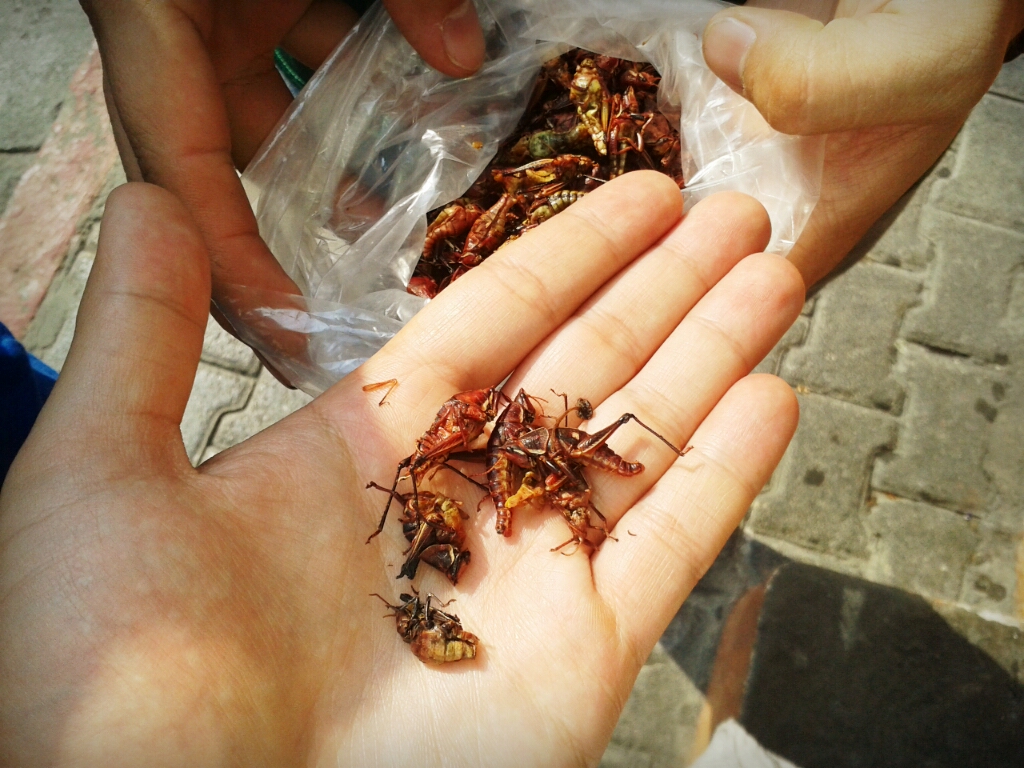 J.Youness, CC BY-SA 4.0, Wikimedia Commons
J.Youness, CC BY-SA 4.0, Wikimedia Commons
Japan: Shiokara
This traditional dish is wonderful in its simplicity, requiring just two ingredients. However, the reason we're talking about it here is that one of those ingredients is tuna, crab, salmon, or sweetfish that has been fermented for about a week in its own internal organs.
Thailand, Palau, And Indonesia: Bat Soup
Not just disgusting, but this particular meal can also be dangerous! You see, the fruit bat that is used in this soup is also known to carry a bunch of unpleasant, and possibly lethal, diseases. This one is less common and considered quite taboo these days.
Australia: Witchetty Grub
While the idea of eating any kind of grub is unpleasant, we can tell you that photojournalist Peter Menzel described these cooked up witchetty grubs as, "like nut-flavored scrambled eggs and mild mozzarella, wrapped in phyllo dough pastry". Doesn't sound half bad, does it?
Japan, Singapore, And South-East Asia: Shirako
Usually served on rice, this white pasty food is...well, there's no other way to put it: It's fish sperm. Maybe the most disturbing thing about Shirako, though, is that the word translates in English to "white children".
India: Gomutra
Generally consumed for therapeutic reasons in Ayurvedic medicine, gomutra is cow urine. Sounds more like something that would make you sick rather than heal any kind of sickness. But either way, for us it's a hard pass.
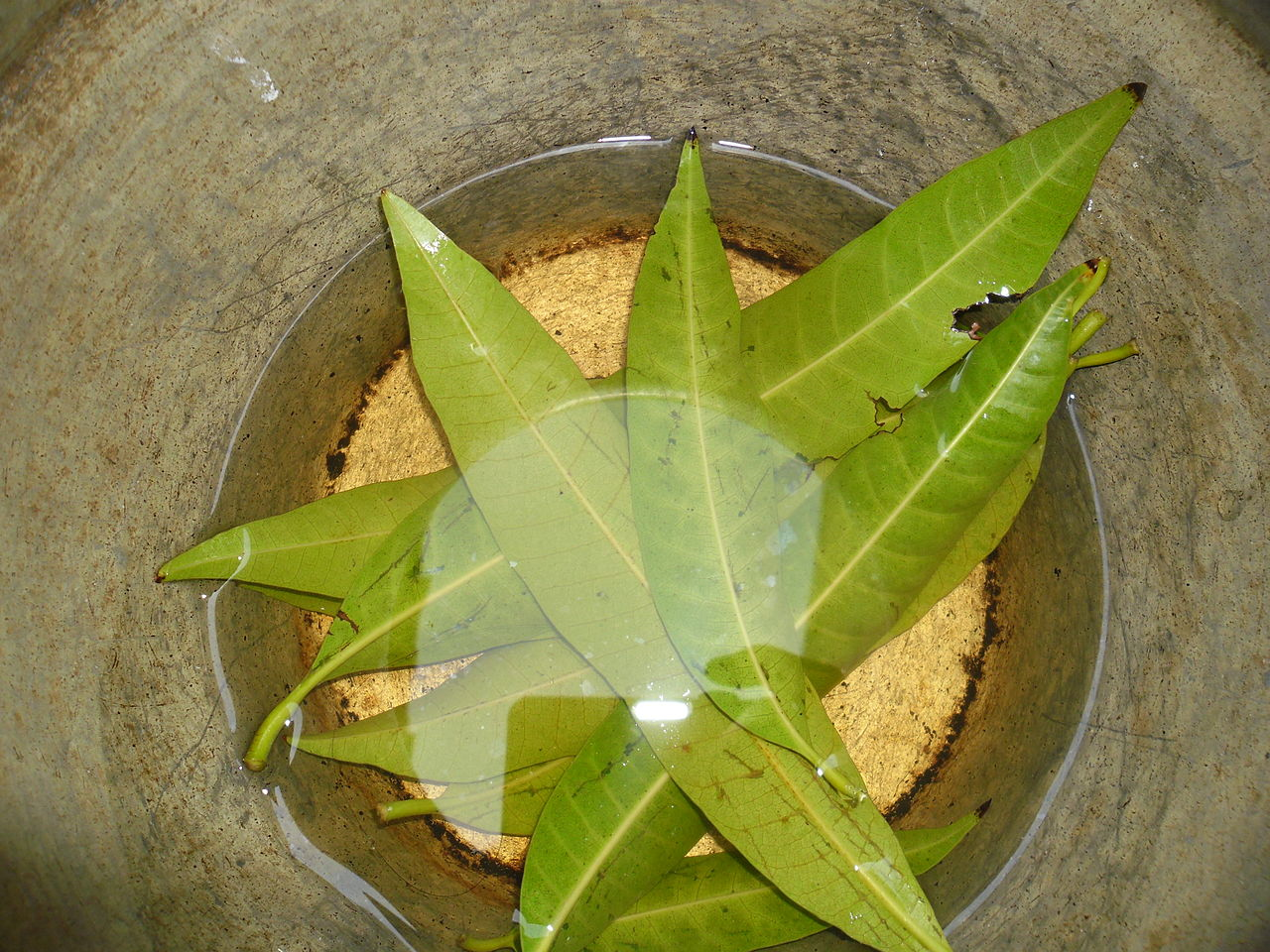 Surya Prakash.S.A., CC BY-SA 3.0, Wikimedia Commons
Surya Prakash.S.A., CC BY-SA 3.0, Wikimedia Commons
China: Baby Mouse Wine
No, that's not just a cute name for something much tamer. Baby mouse wine is literally 12 or more hairless and still blind baby mice drowned in rice wine and left to mature for a year. This one is another tonic, meant to cure things like asthma and liver diseases. But while its health claims seem iffy at best, its "disgusting" quotient can't be denied.
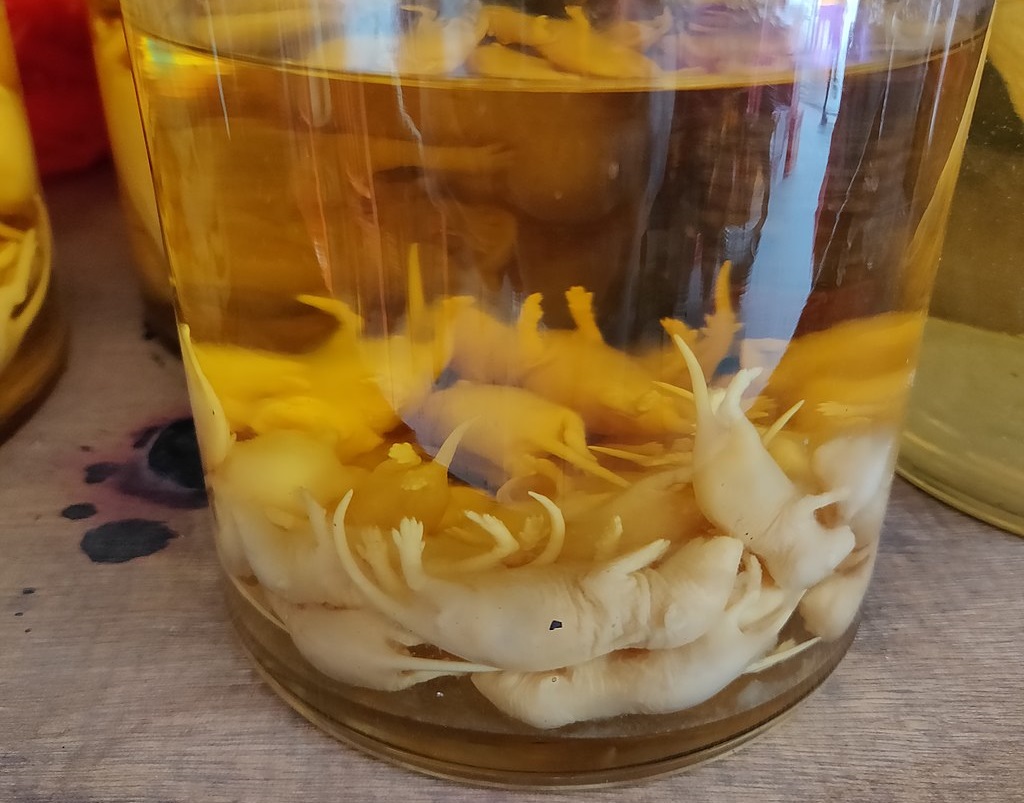 Andriy Makukha (Amakuha), CC BY-SA 4.0, Wikimedia Commons
Andriy Makukha (Amakuha), CC BY-SA 4.0, Wikimedia Commons
Italy: Callu De Cabrettu
Here we have another old Italian cheese. In fact, Callu de Cabrettu is one of the oldest forms of cheese in the world. So how do they make it? First you need a young goat that has just finished drinking its mother's milk. Then you slaughter it, remove the stomach, and hang it up while the enzymes in the stomach turn the milk into cheese. The cheese is served right from the stomach.
Mongolia: Sheep Eyeball Juice
A Mongolian Mary, as it is also known, is a glass of tomato juice with a pickled sheep eyeball floating in it. They say it's a great cure for a hangover, but we prefer it when our drinks aren't staring right back at us. Not to mention that burst of eyeball innards that fills your mouth when you bite down on it.
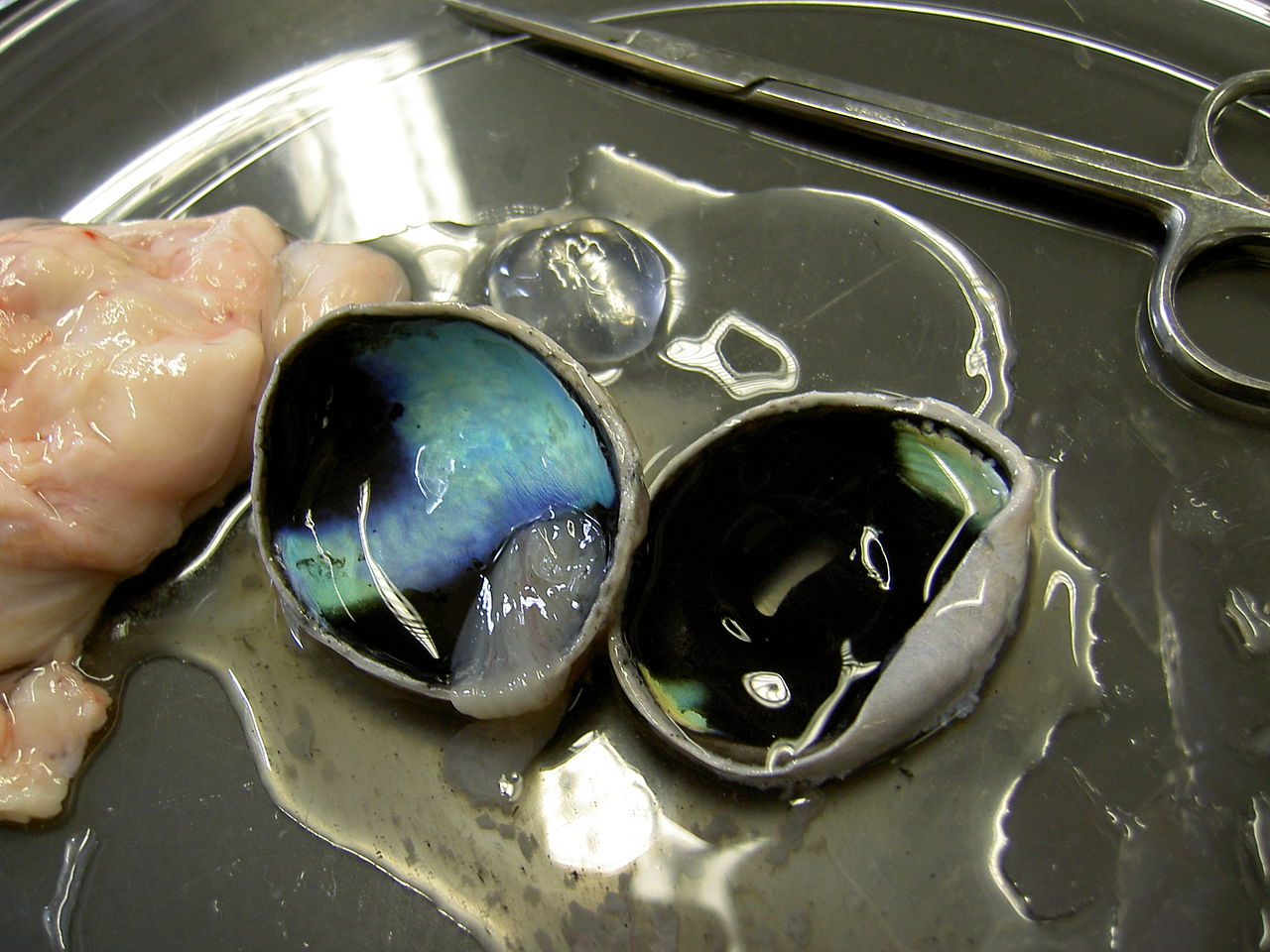 Naib, CC BY-SA 2.5, Wikimedia Commons
Naib, CC BY-SA 2.5, Wikimedia Commons
Korea: San-nakji
You might've had octopus for dinner at your favorite local seafood restaurant, but you've probably never had it like this. San-nakji is octopus, but it's octopus that's served so fresh, the nerves in the tentacles are still active—meaning your food is moving on the plate. Which also means the suction cups on the tentacles can still grip onto things—like a diner's throat. Fatal choking hazard anyone?
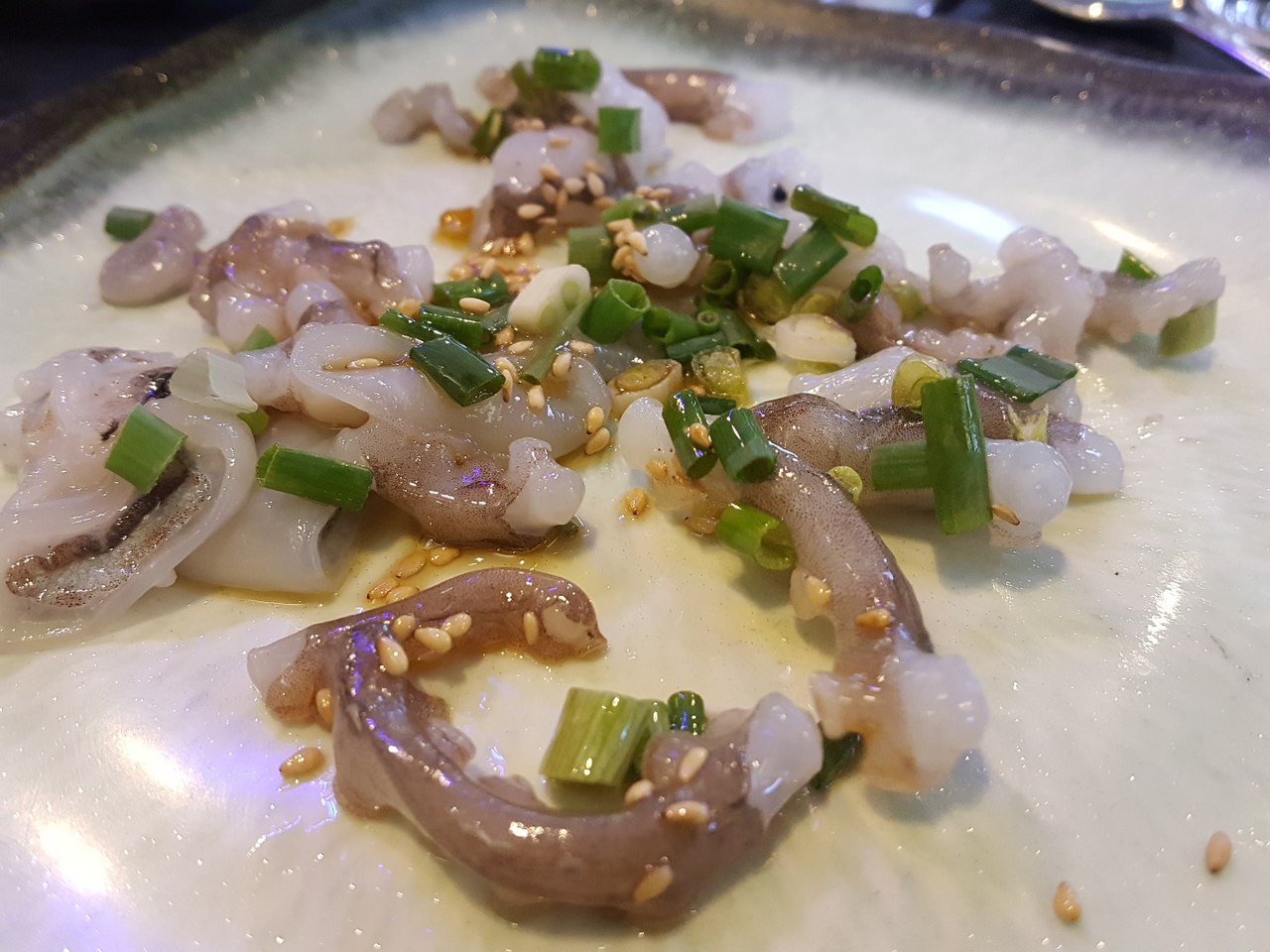 Leeyj0401, CC BY-SA 4.0, Wikimedia Commons
Leeyj0401, CC BY-SA 4.0, Wikimedia Commons
Southeast Asia: Durian
Custard, caramel, vanilla, almonds, sweet, creamy—these are all words that have been used to describe the Durian fruit. So, what's it doing here? Well, here are some words that have been used to describe its smell: sulfur, sewage, rotten fish, dragon’s breath, unwashed socks.
Indonesia: Kopi luwak Coffee
It's been called "the most expensive coffee in the world" and the "Holy Grail of coffees". But if you type "poo coffee" into Google, this will also most likely be the top result. Kopi Luwak—AKA civet coffee—is made of partially digested coffee cherries that have been eaten and then, ummm, "released" from the back end of an Asian palm civet.
Japan: Nattō
Put simply, Nattō is soybeans that have been fermented with the bacterium bacillus subtilis, a bacterium found in soil and in the gastronomical tracts of humans and other animals. If that isn't enough, before you eat them, one is supposed to stir the beans around, producing gooey, slimy strings. Did we mention it smells like old socks and hot garbage?
Sweden: Bävergäll
For all you non-beaver experts, the animal marks its territory with a yellow liquid that comes from mixing its urine with a fluid it excretes from its anal glands called castoreum. Hungry yet? Bävergäll are those anal glands that have been infused in alcohol for weeks. How about now?
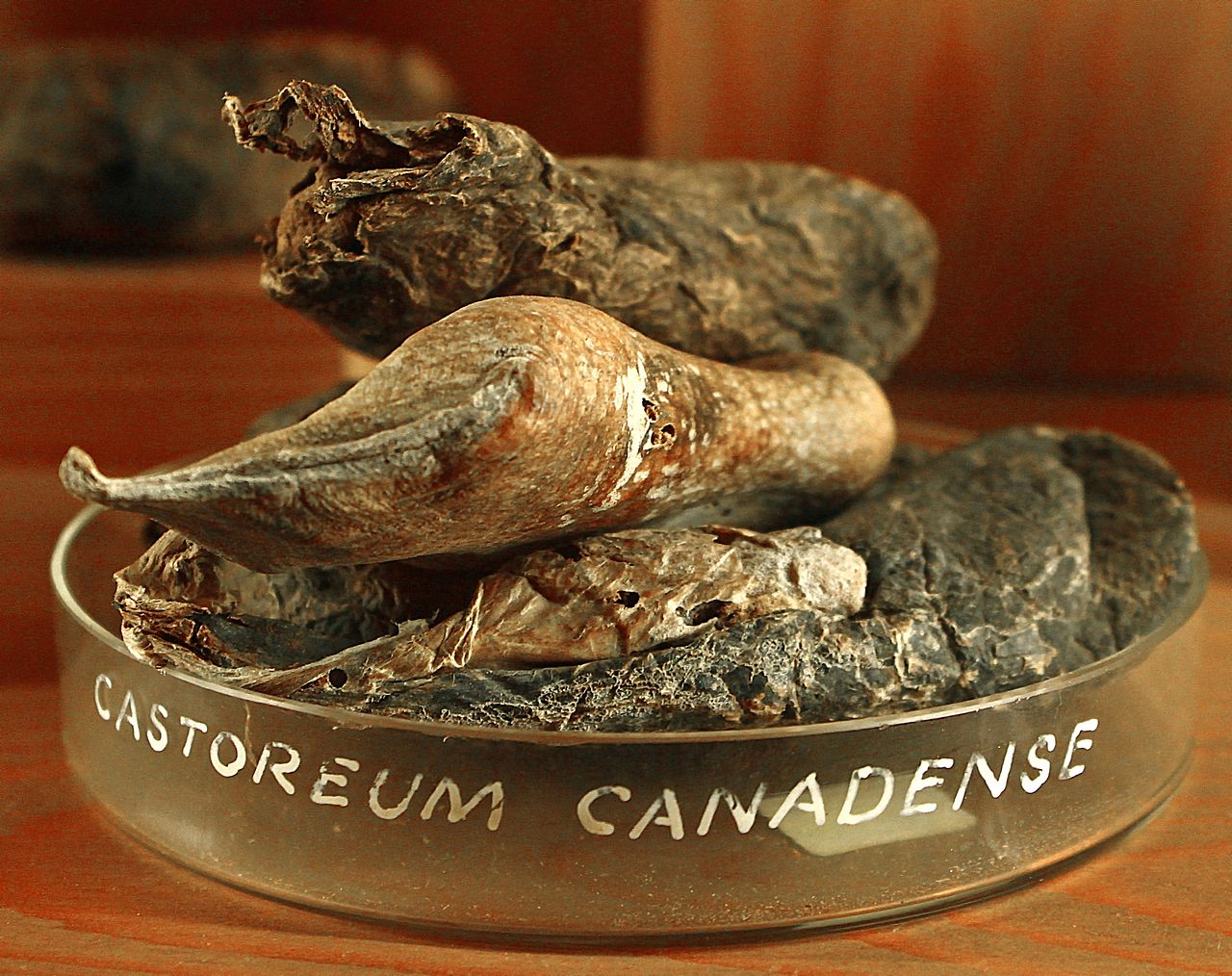 H. Zell, CC BY-SA 3.0, Wikimedia Commons
H. Zell, CC BY-SA 3.0, Wikimedia Commons
Alaska: Stink Head
This is fermented salmon head—commonly referred to as Stink Head. But the smell isn't the only issue with this one. You see, fermenting might not be a strong enough word for what happens to the fish heads that are buried underground for weeks at a time. Some would say a more accurate term would be plain ol' "rotting"—leading to a mushy texture.
Mediterranean, Northern Europe: Whole Sheep's Head
The key word there is "whole". If it were just some pieces of meat cut from the head of a sheep it wouldn't be that big a deal (we can eat a hot dog without thinking about what parts of the pig it came from). However, when you have the entire head of a sheep on your plate looking at you (eyeballs intact), that's when things get disgusting. On rare occasions, the brains are even left inside the head.
Various Countries: Human Placenta
Eating the placenta has been touted as having beneficial effects for new mothers in counteracting postpartum depression and other post-pregnancy issues—not just in far off places either. Mad Men actress January Jones had her placenta dried, dehydrated, and made into pills which she took following the birth of her son in 2011.
 Peabody Awards, CC BY 2.0, Wikimedia Commons
Peabody Awards, CC BY 2.0, Wikimedia Commons

